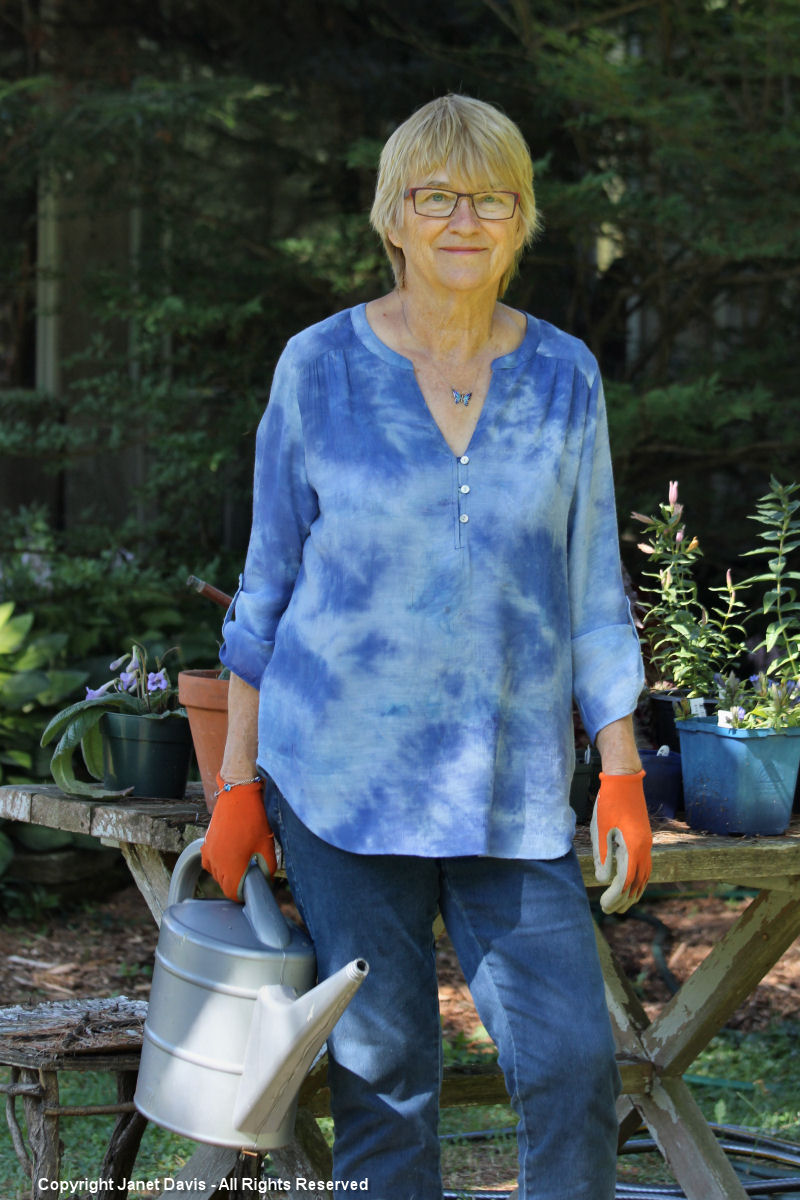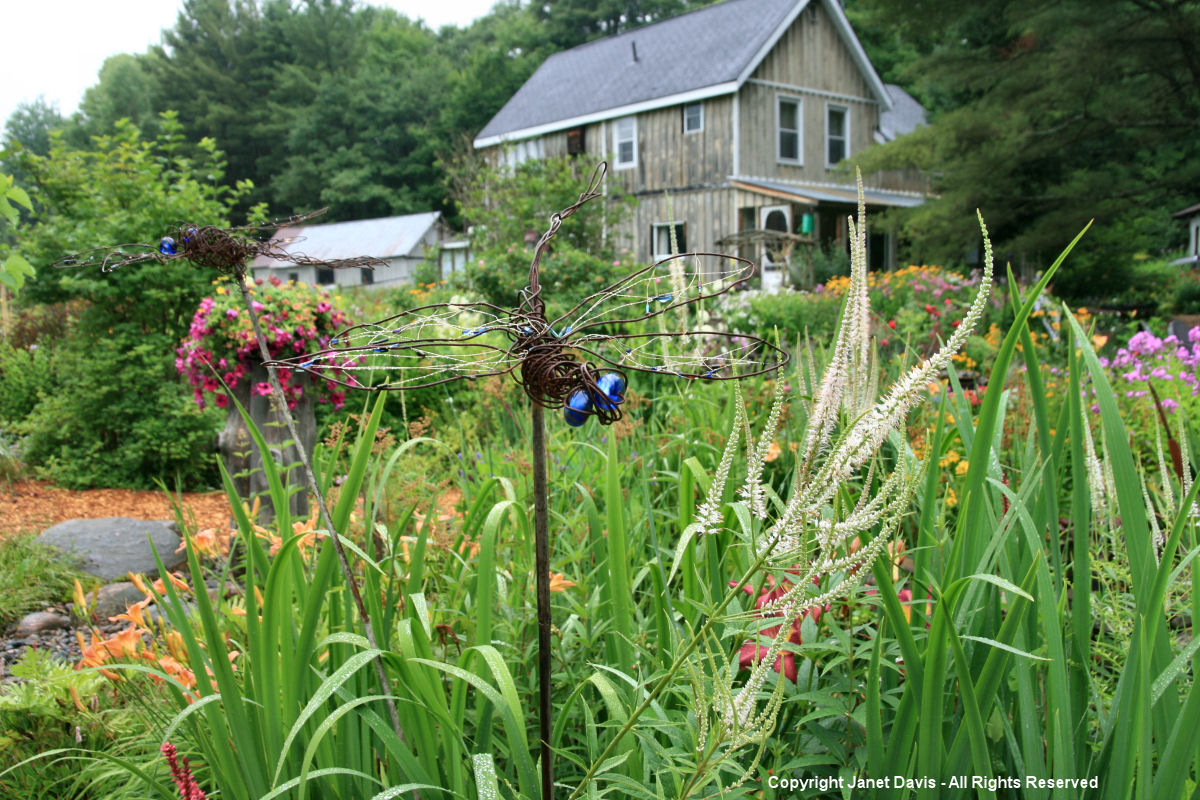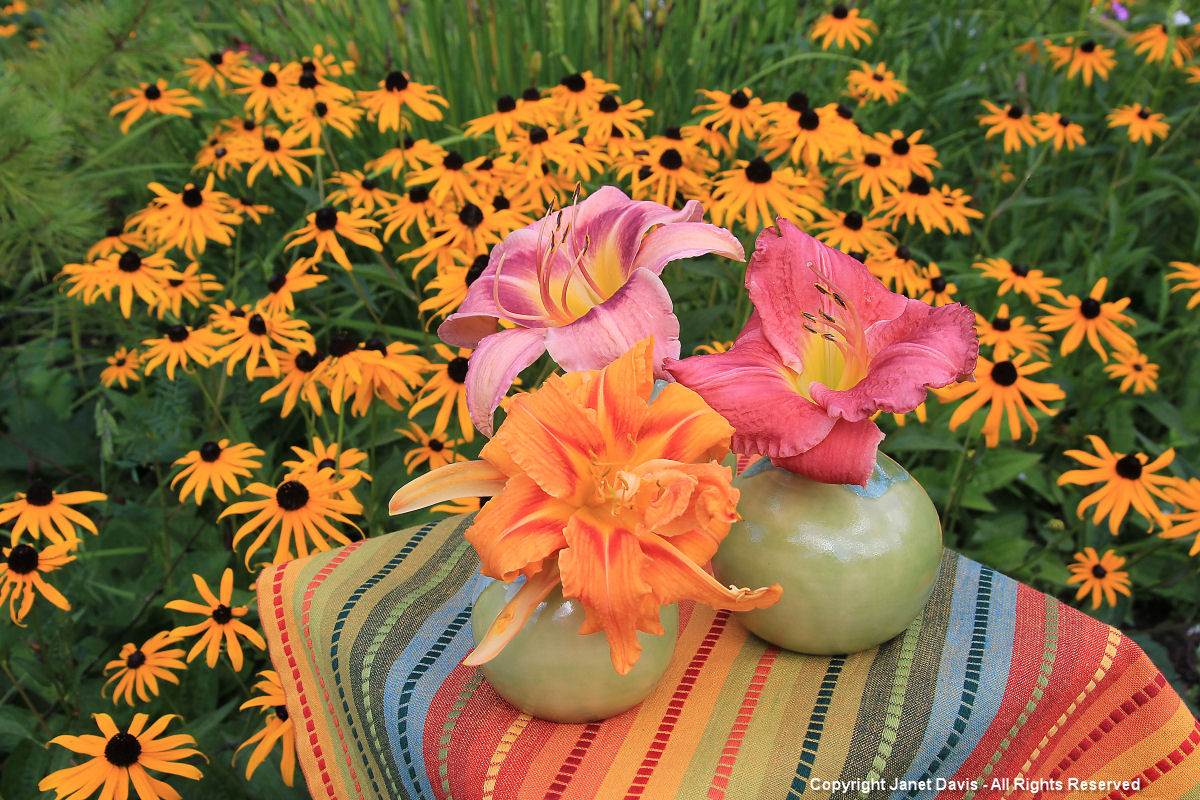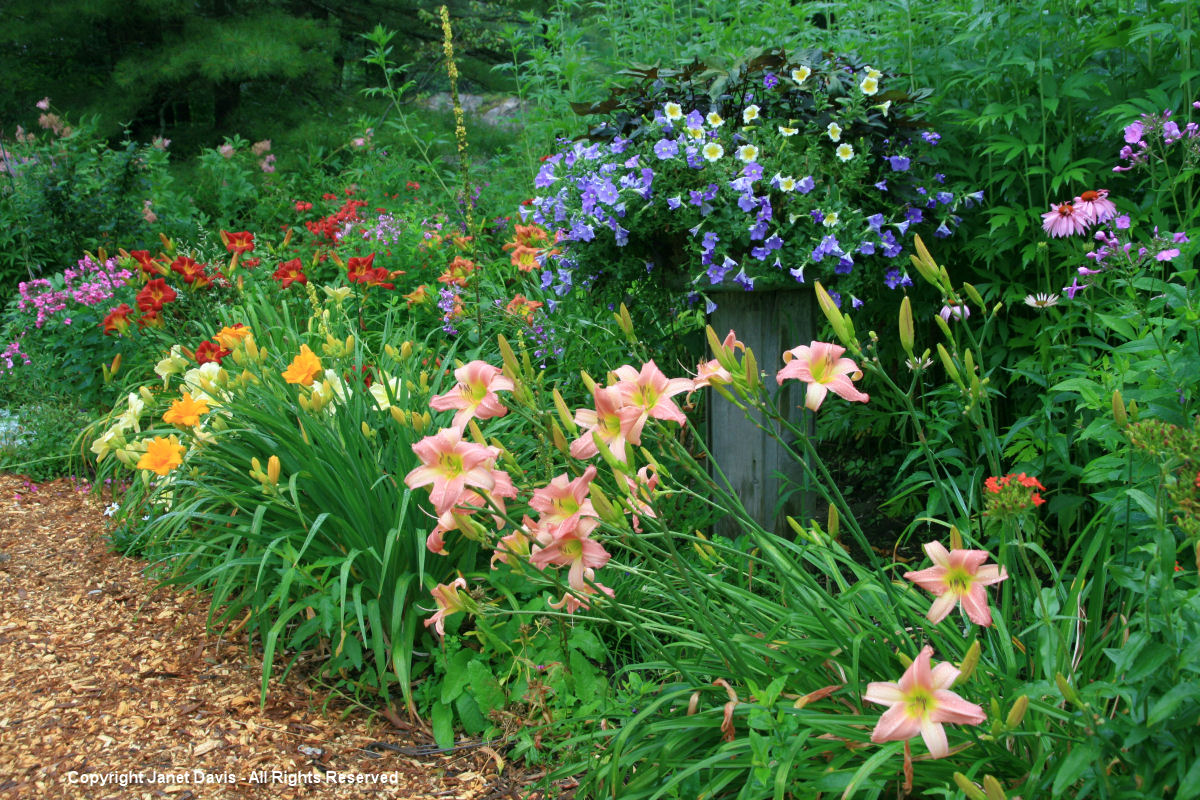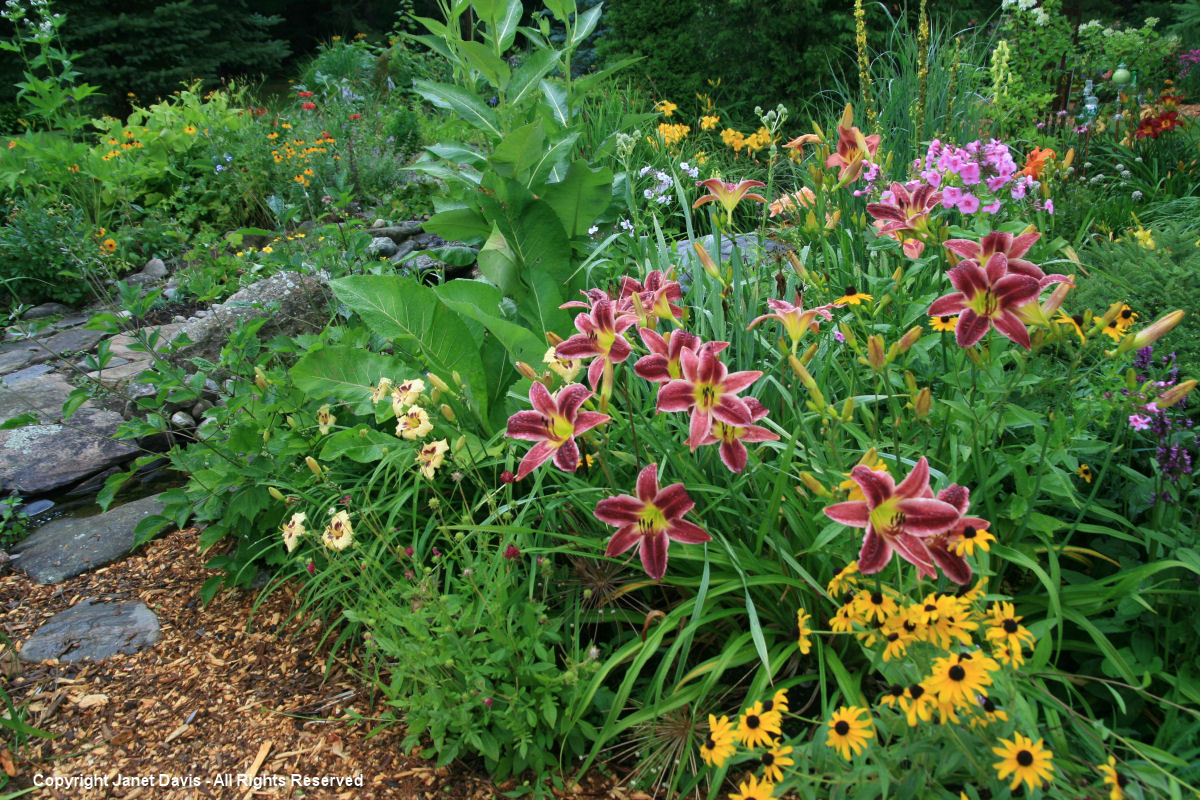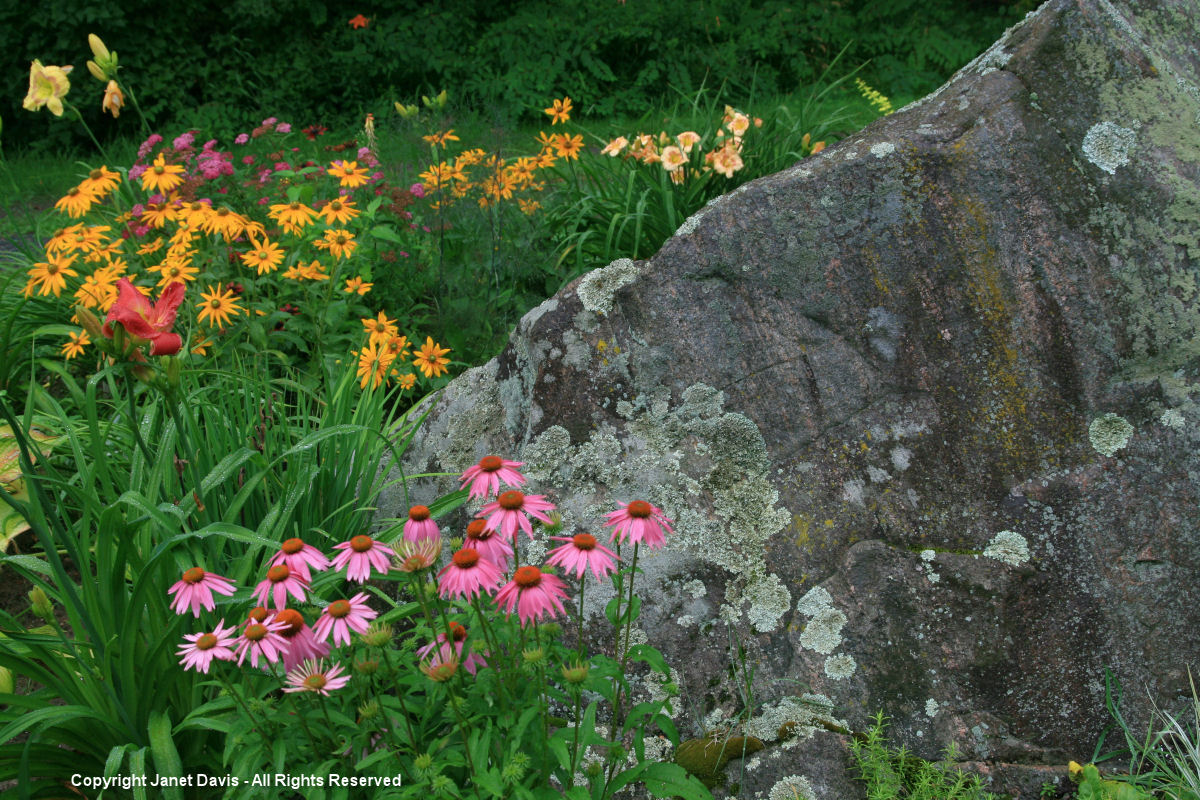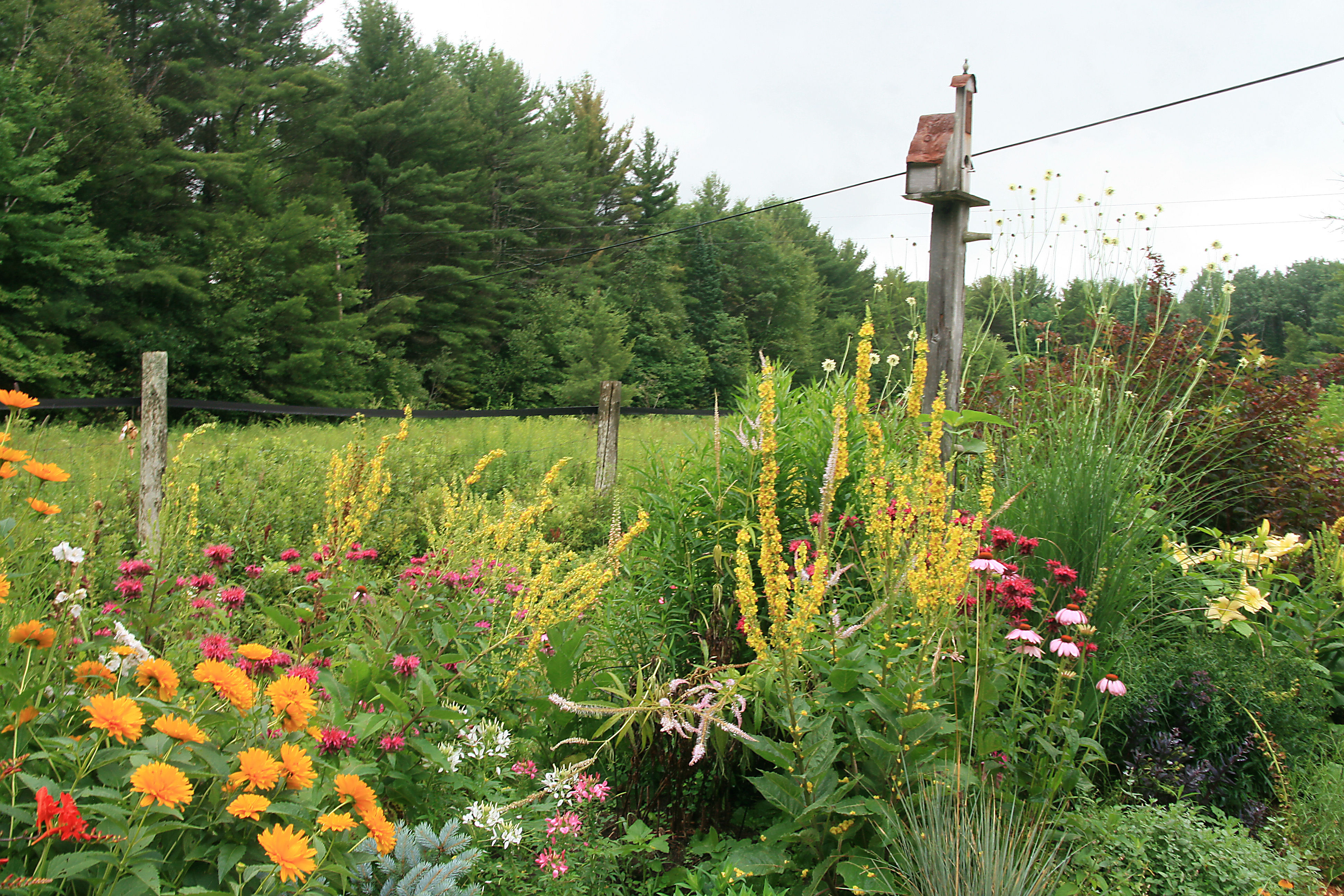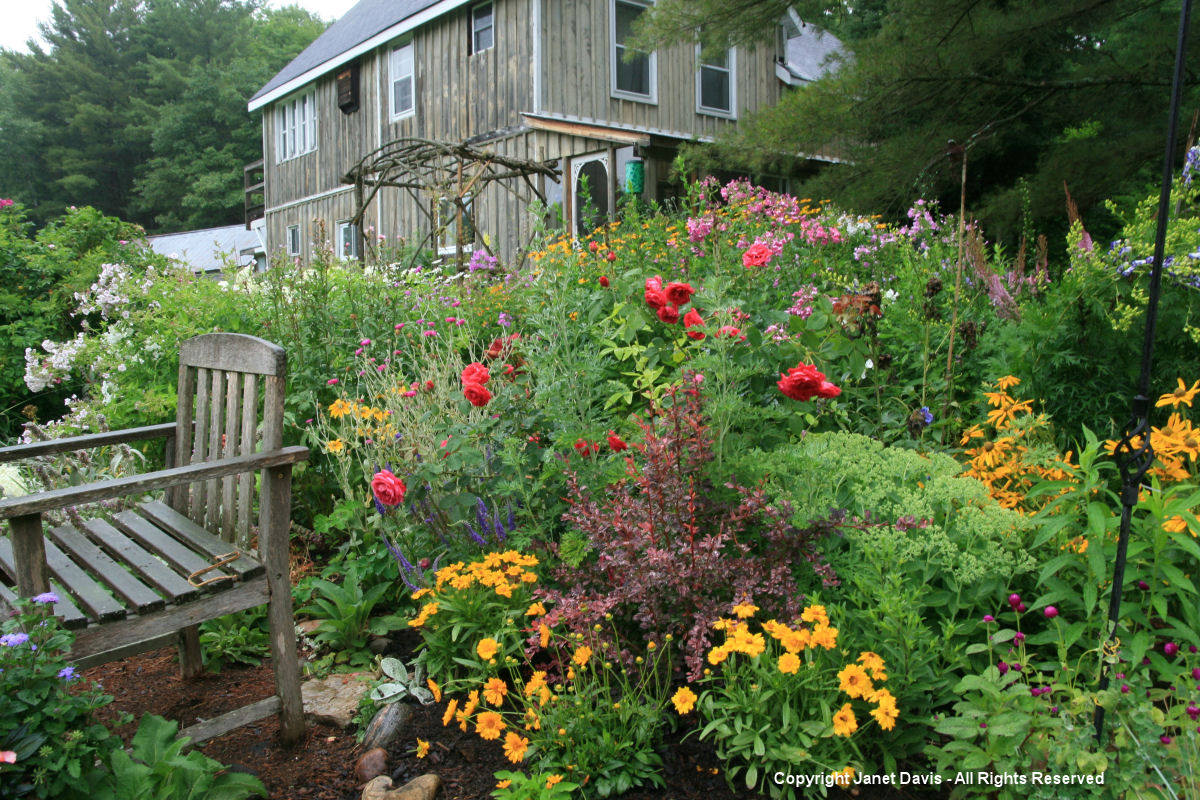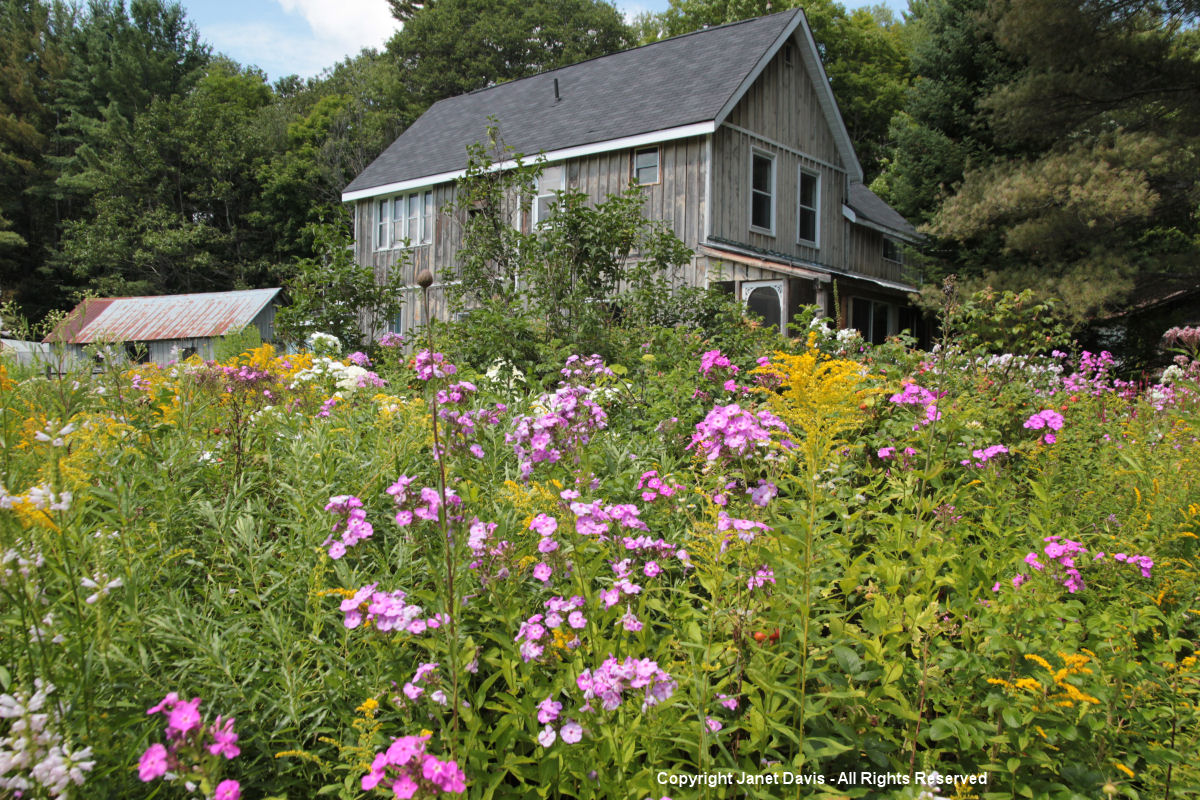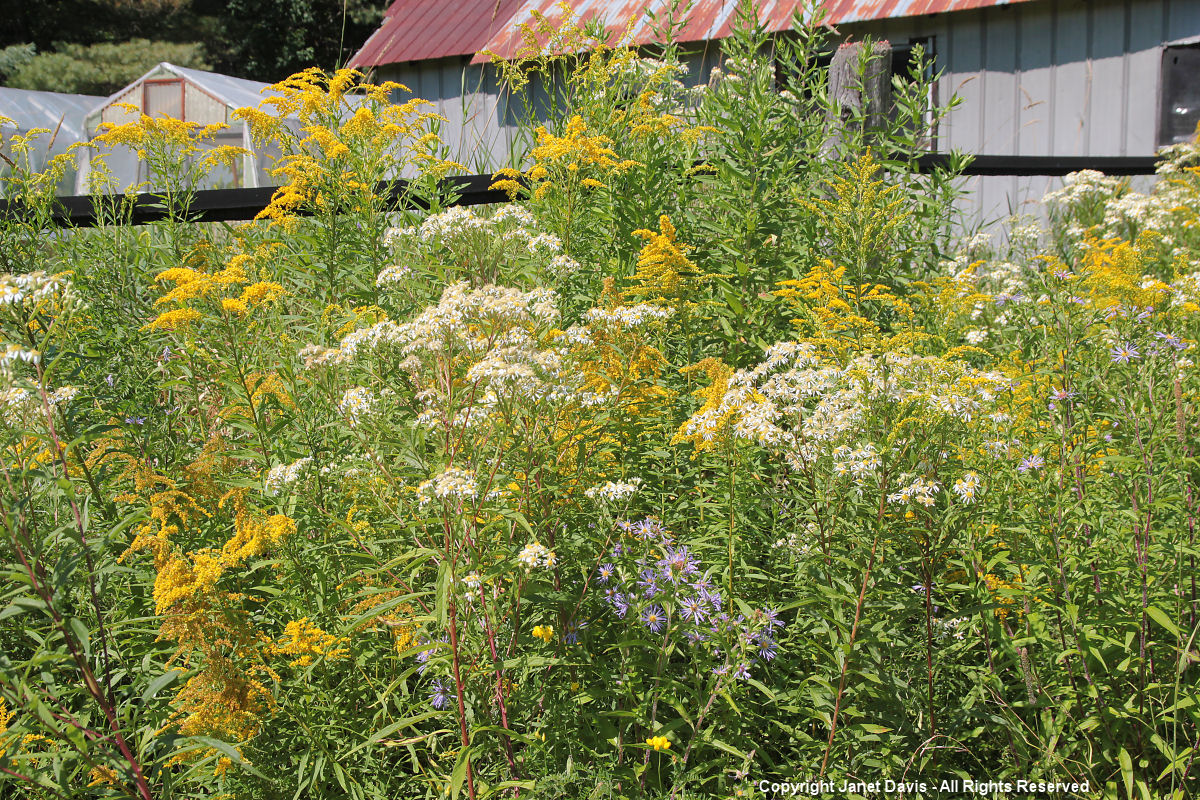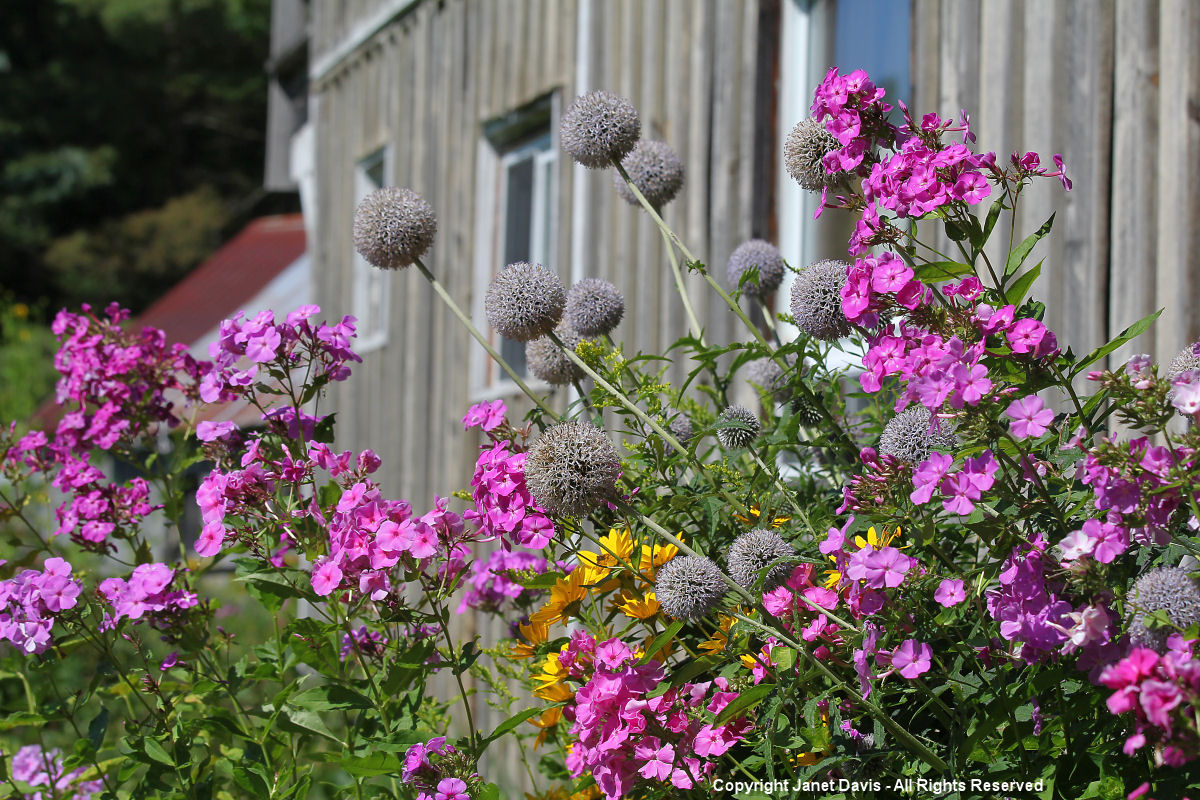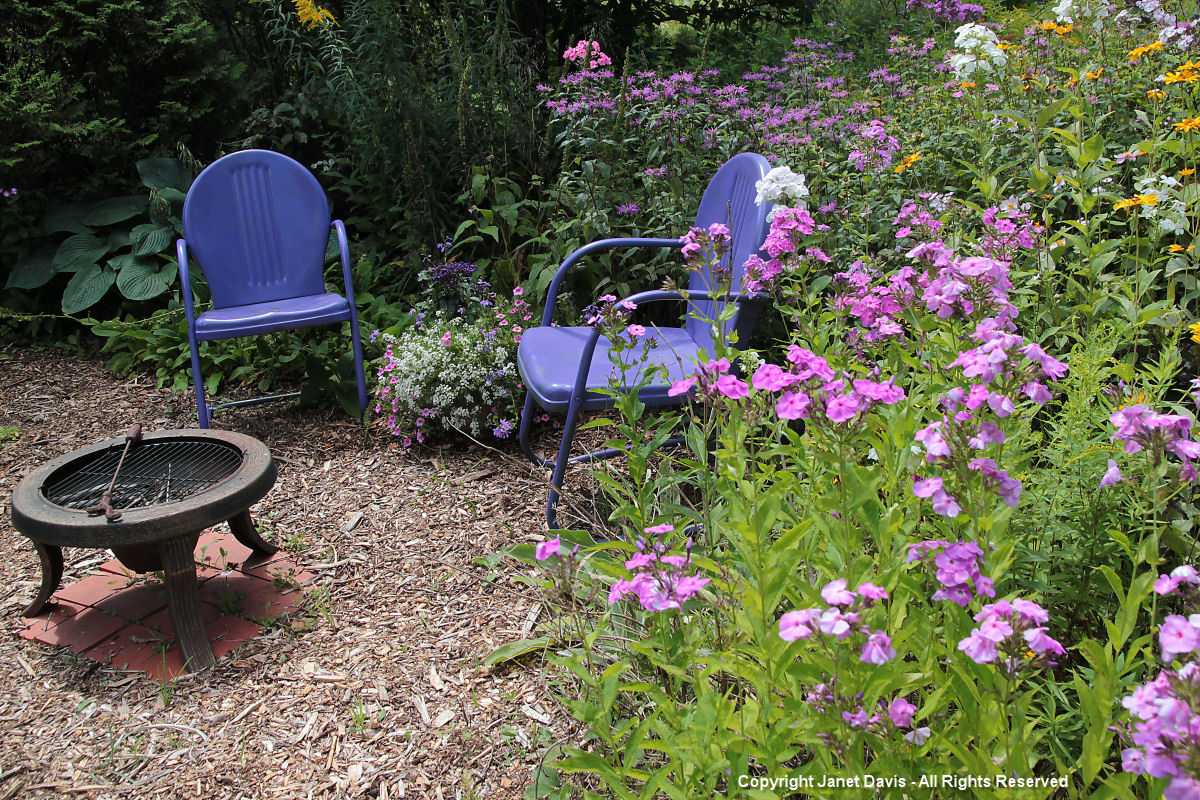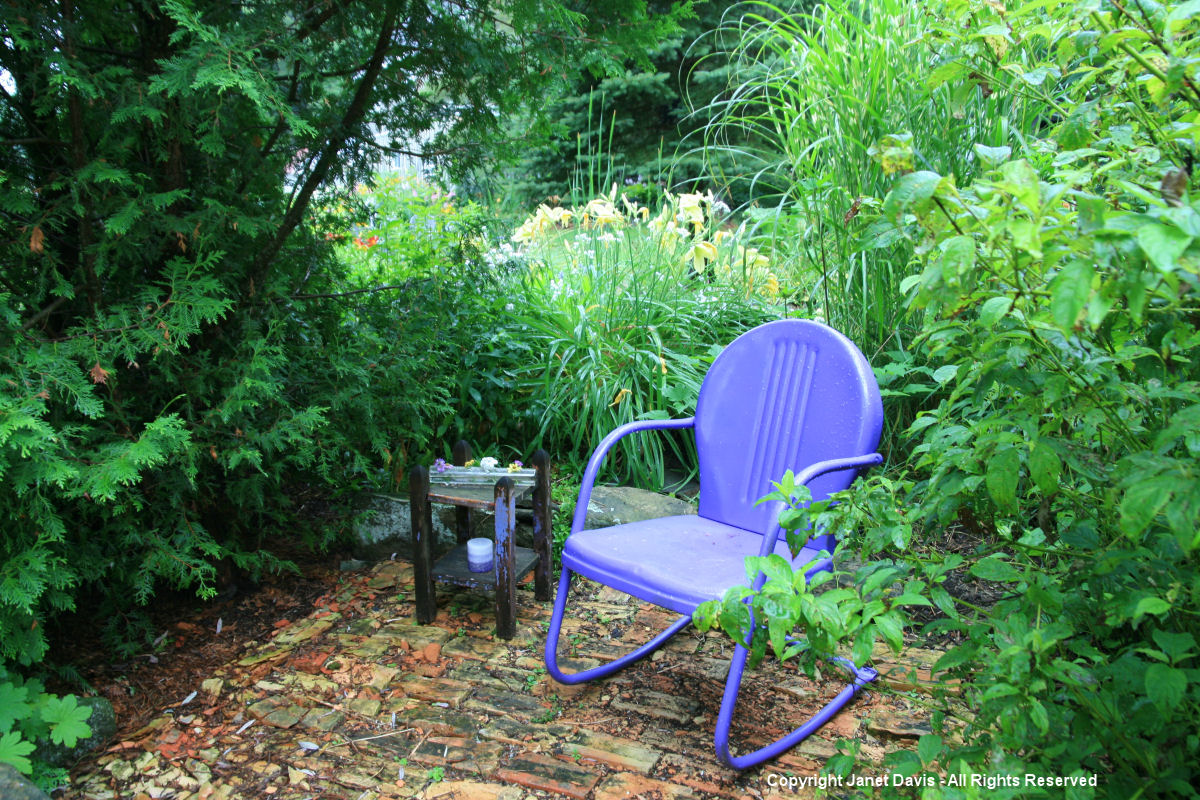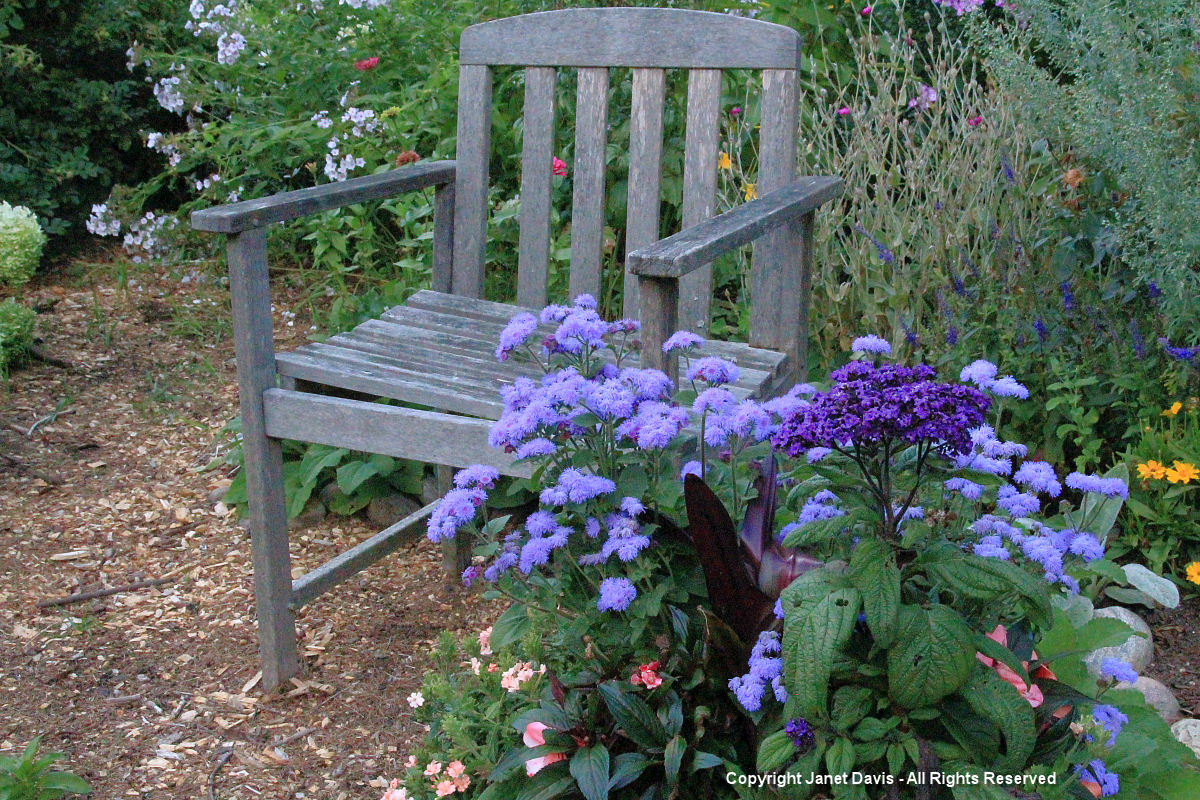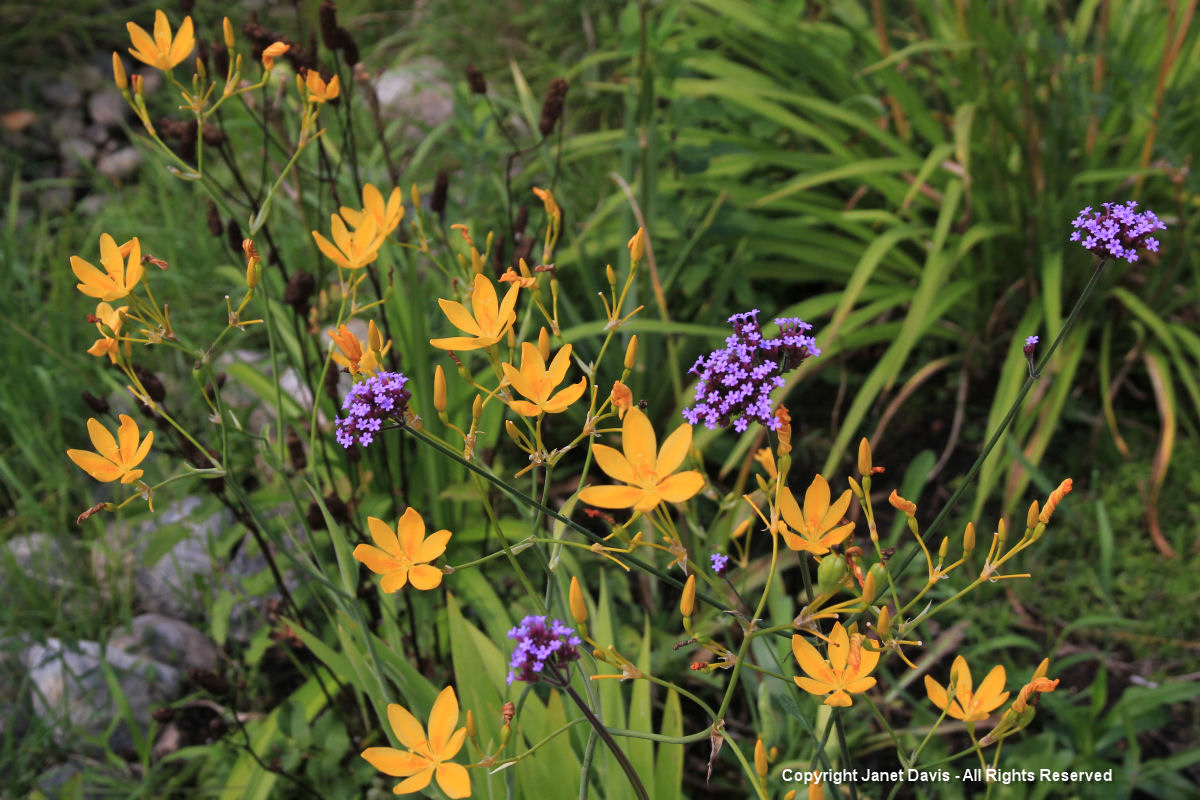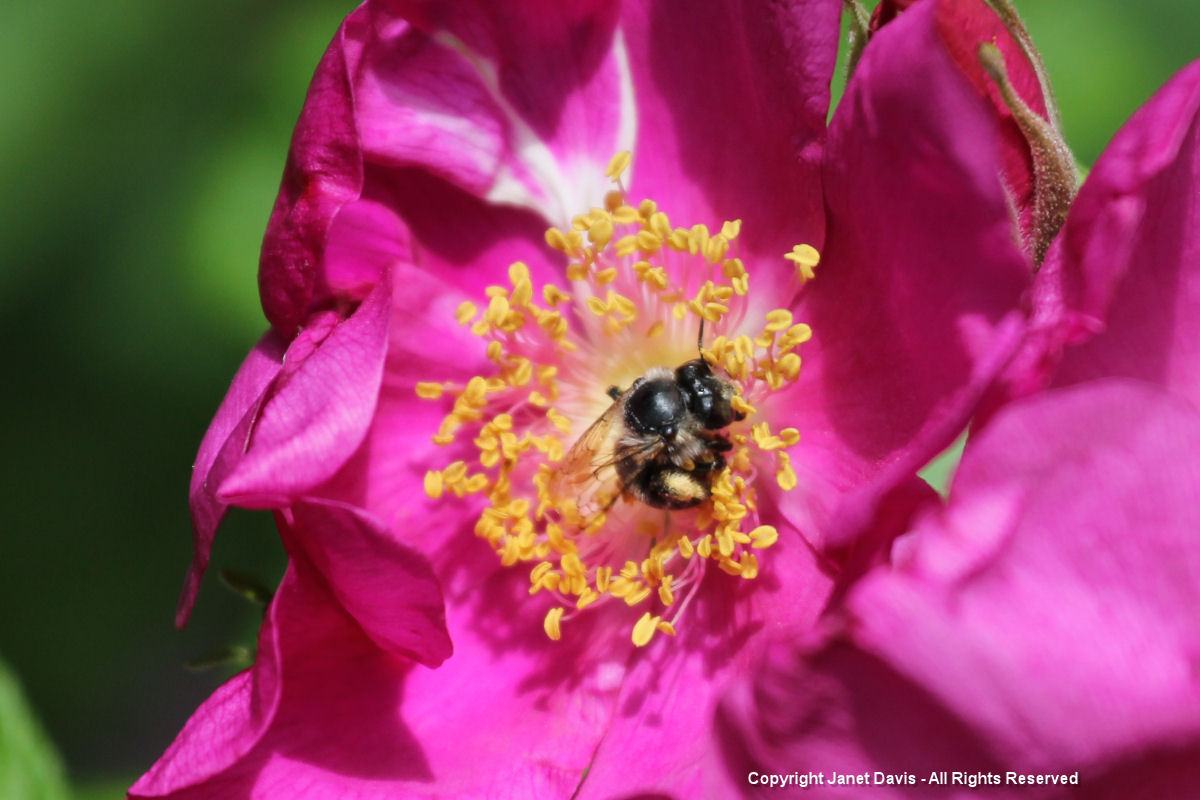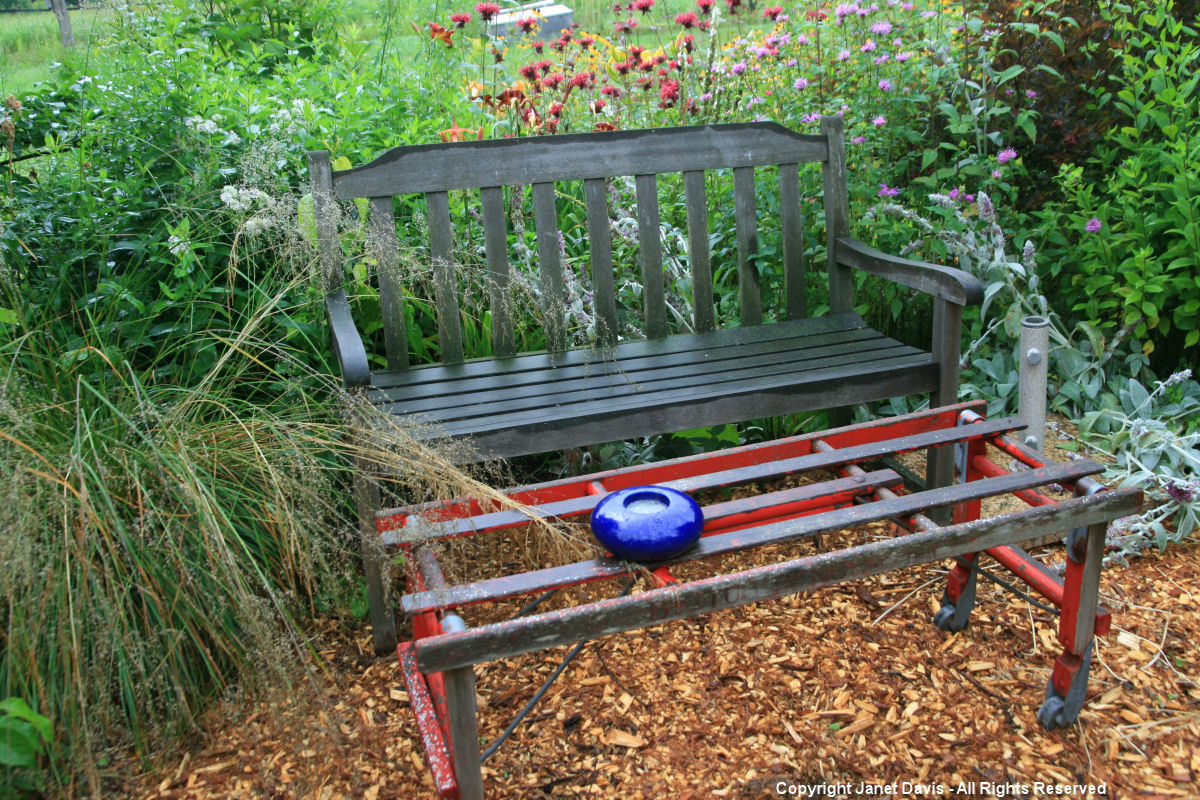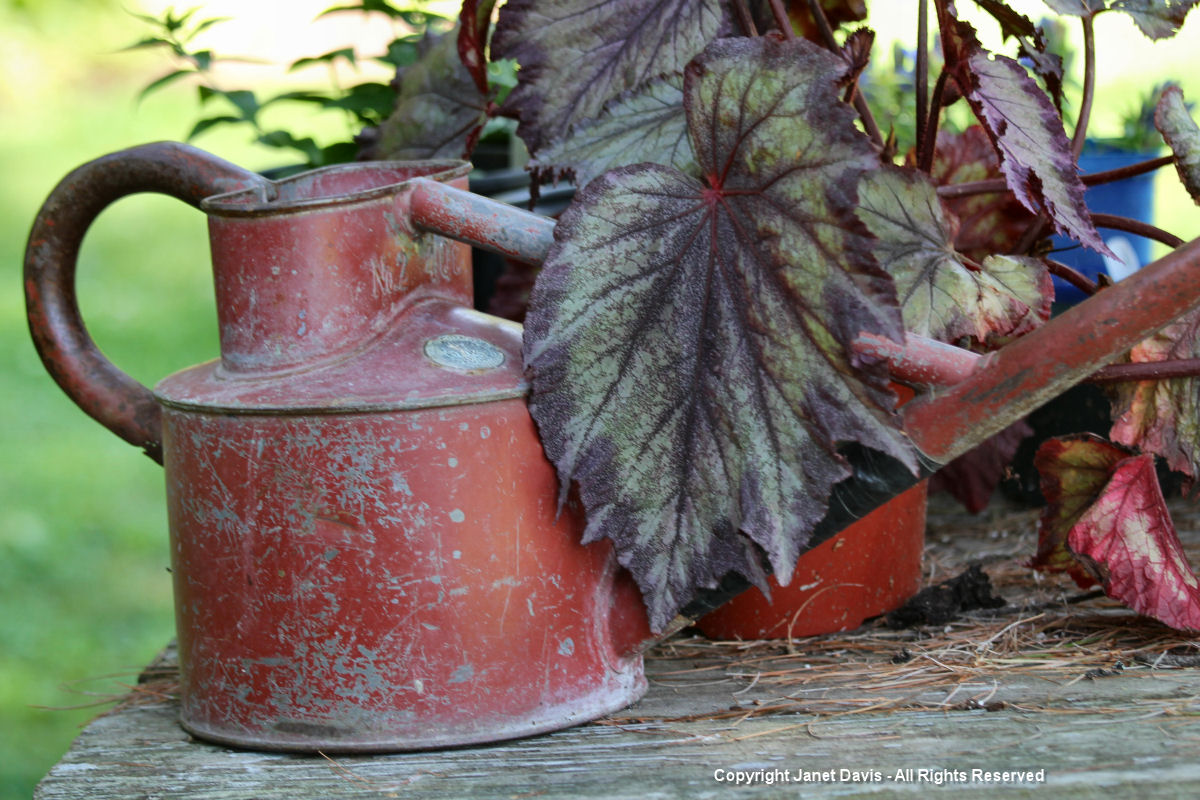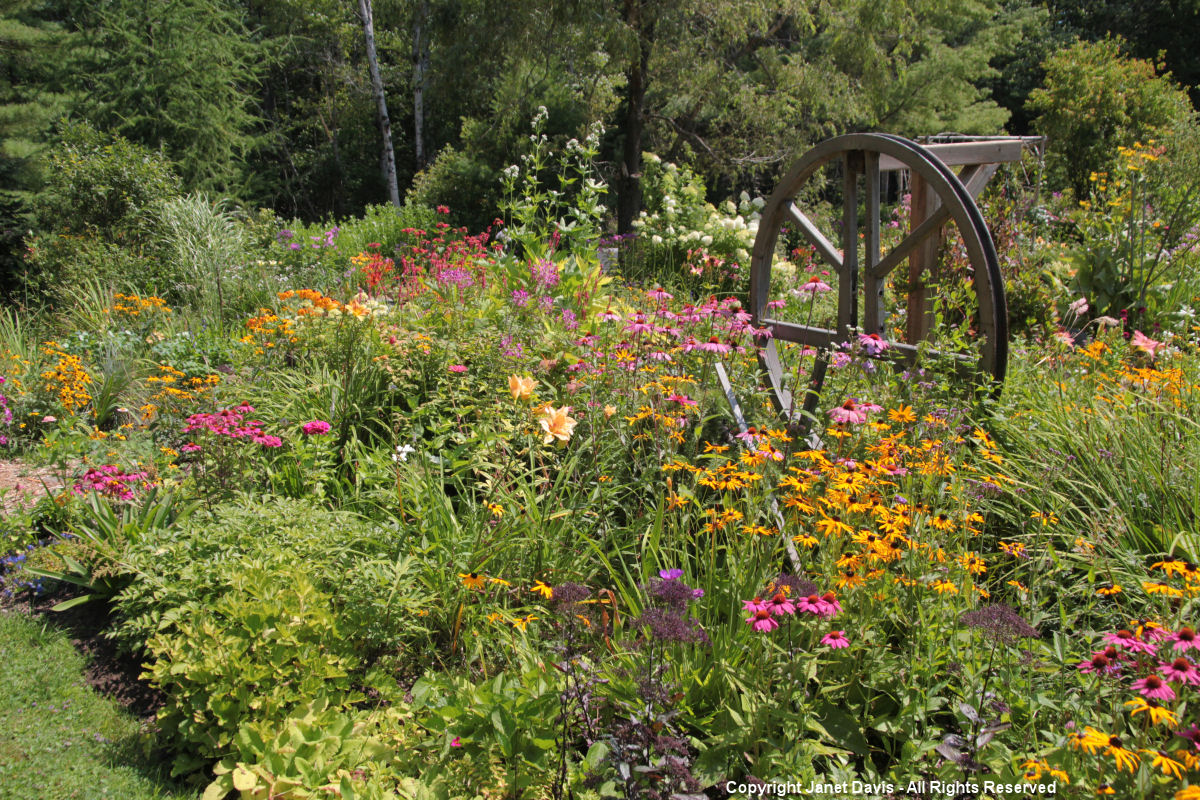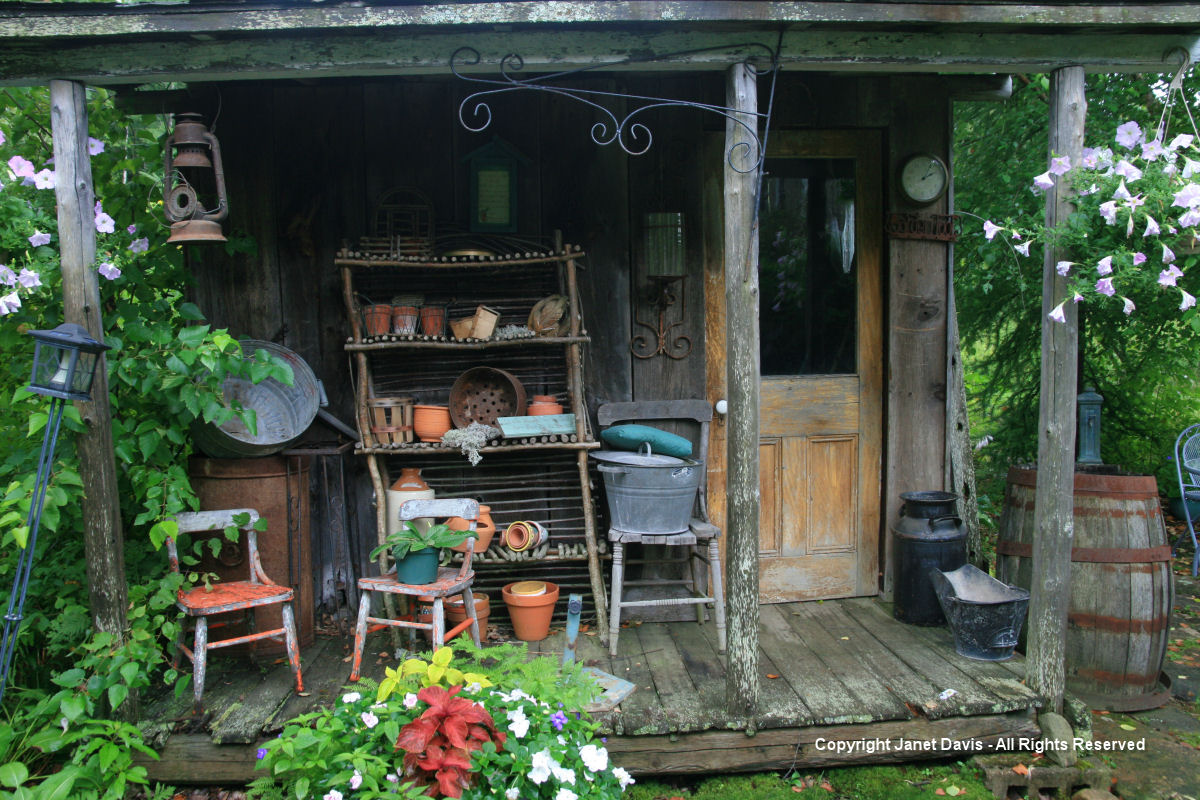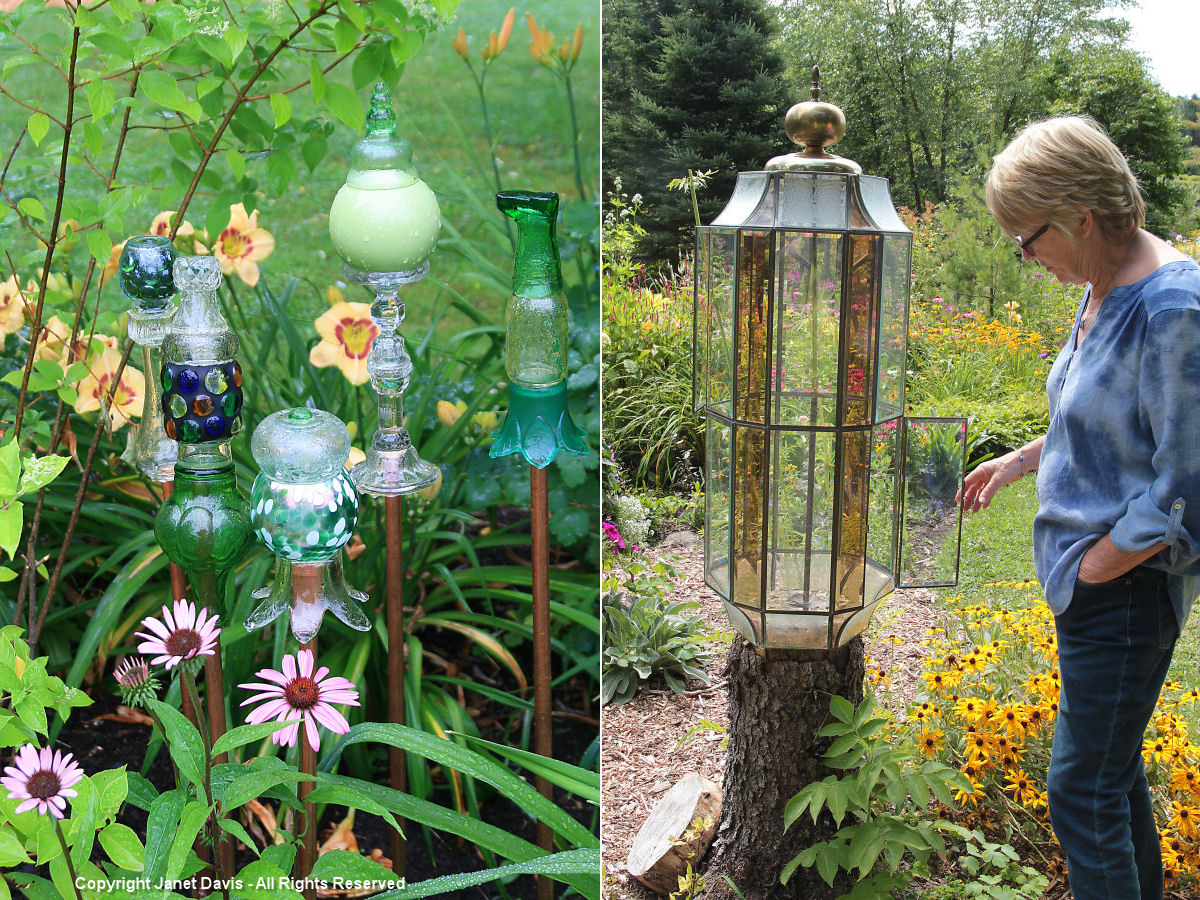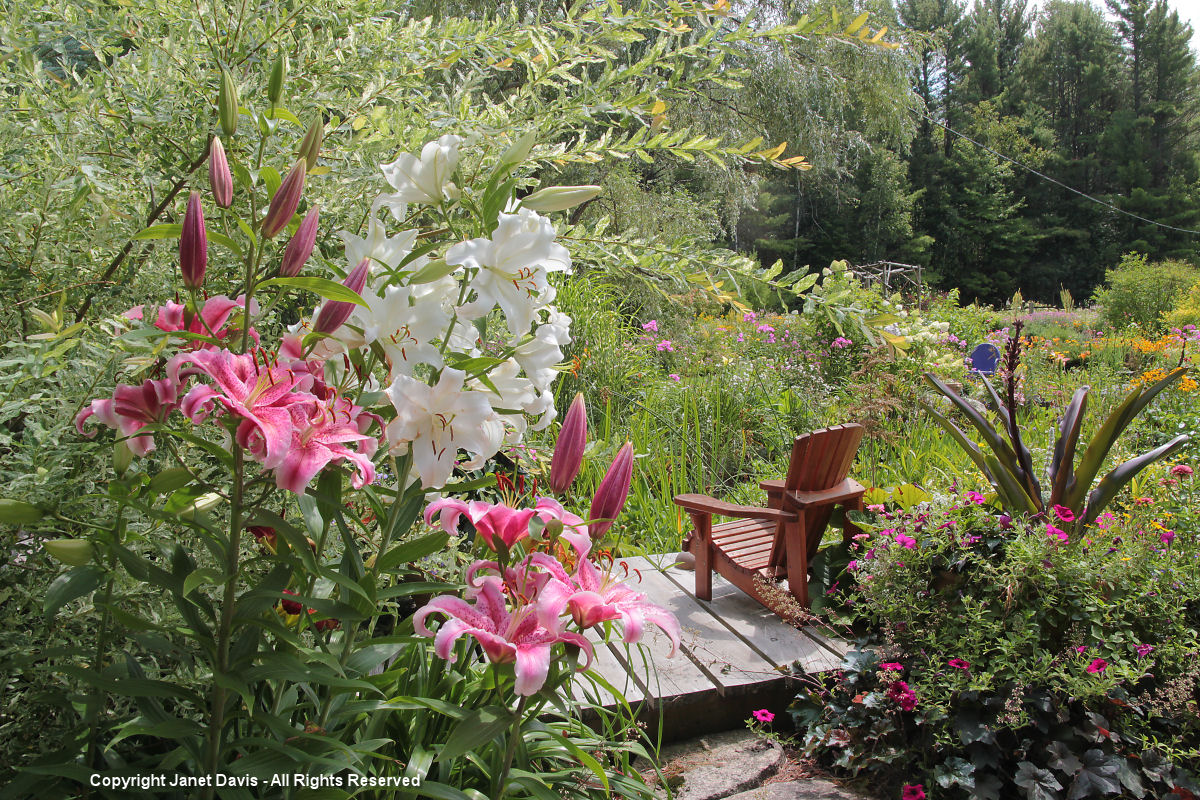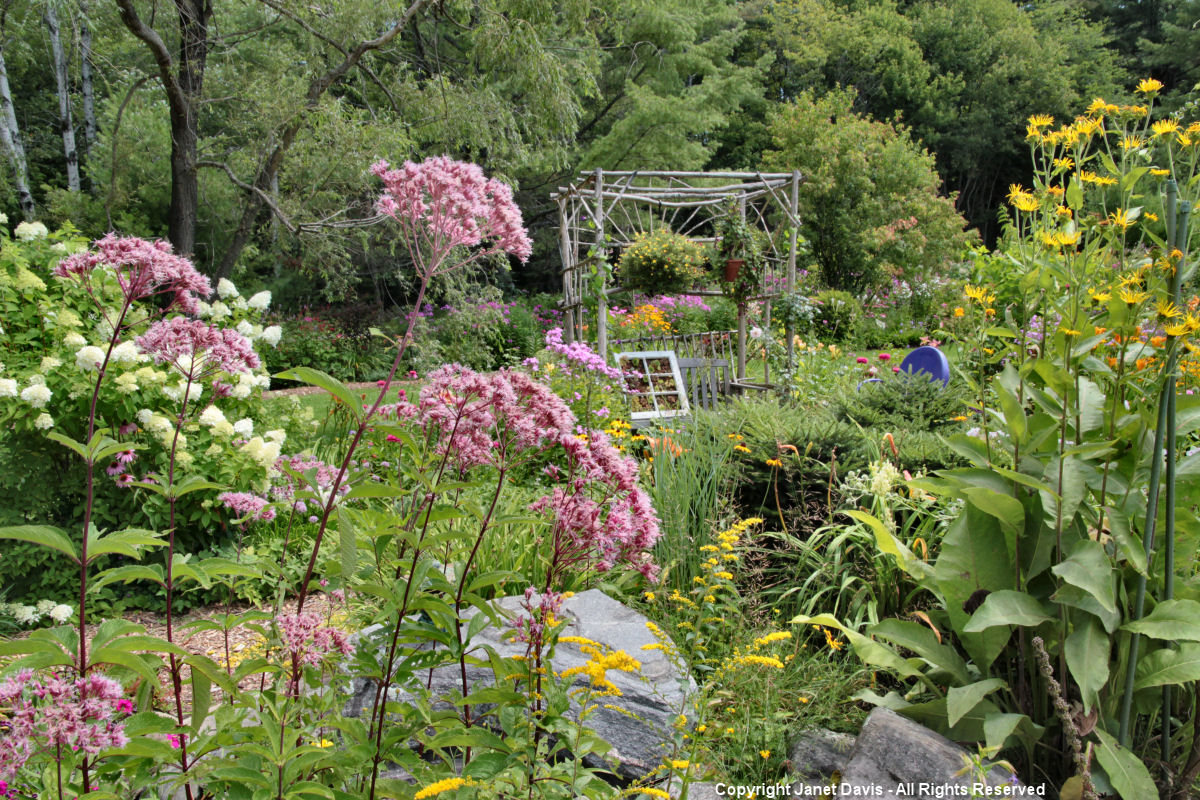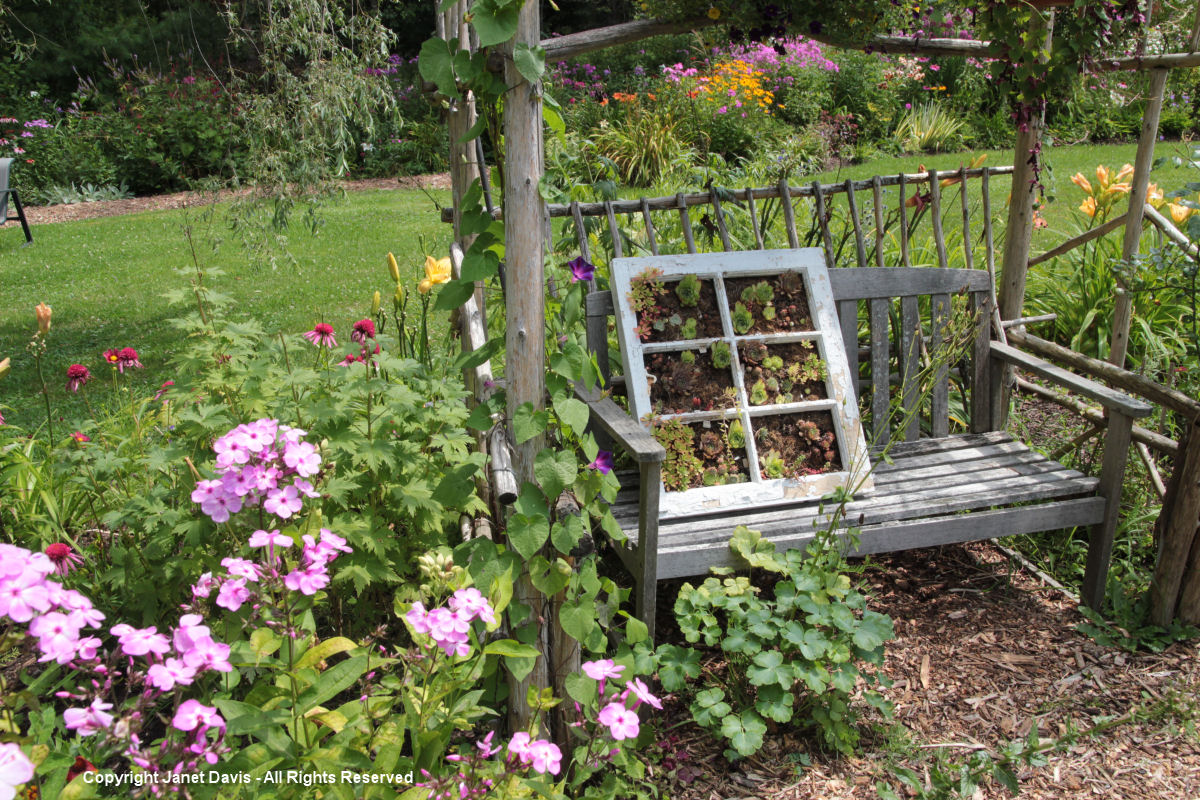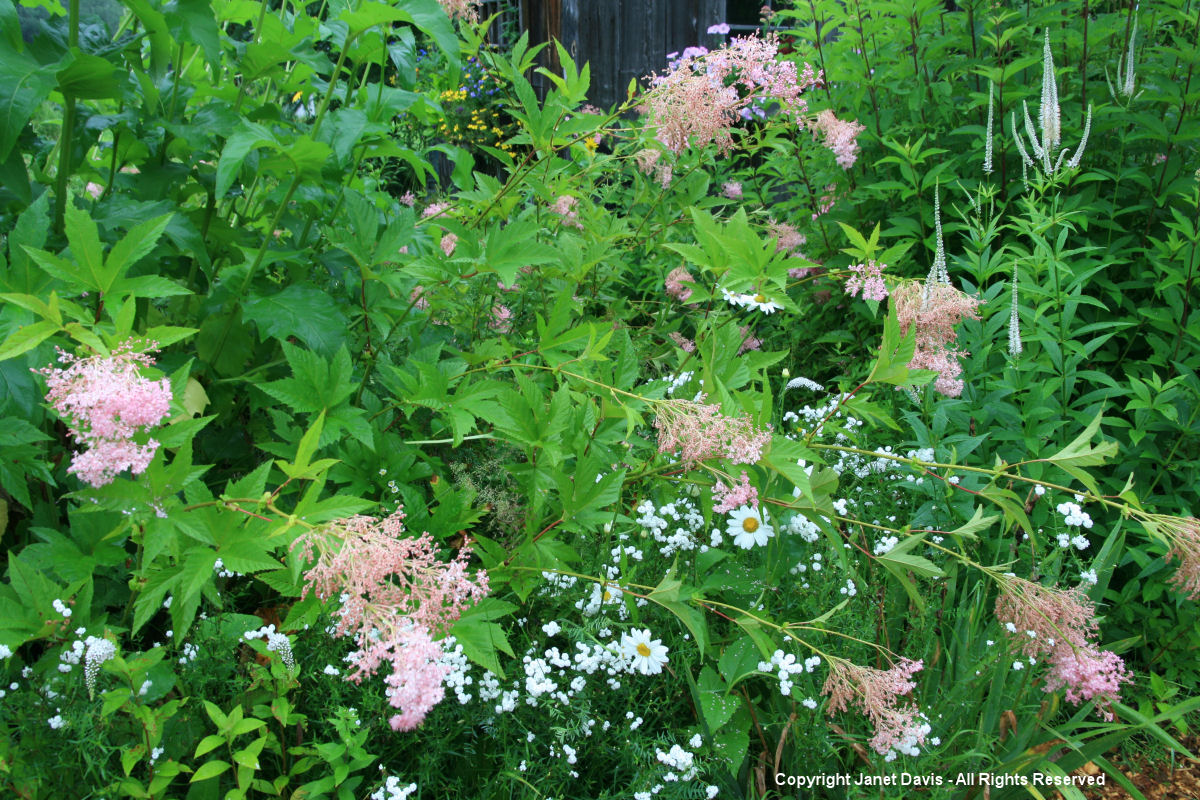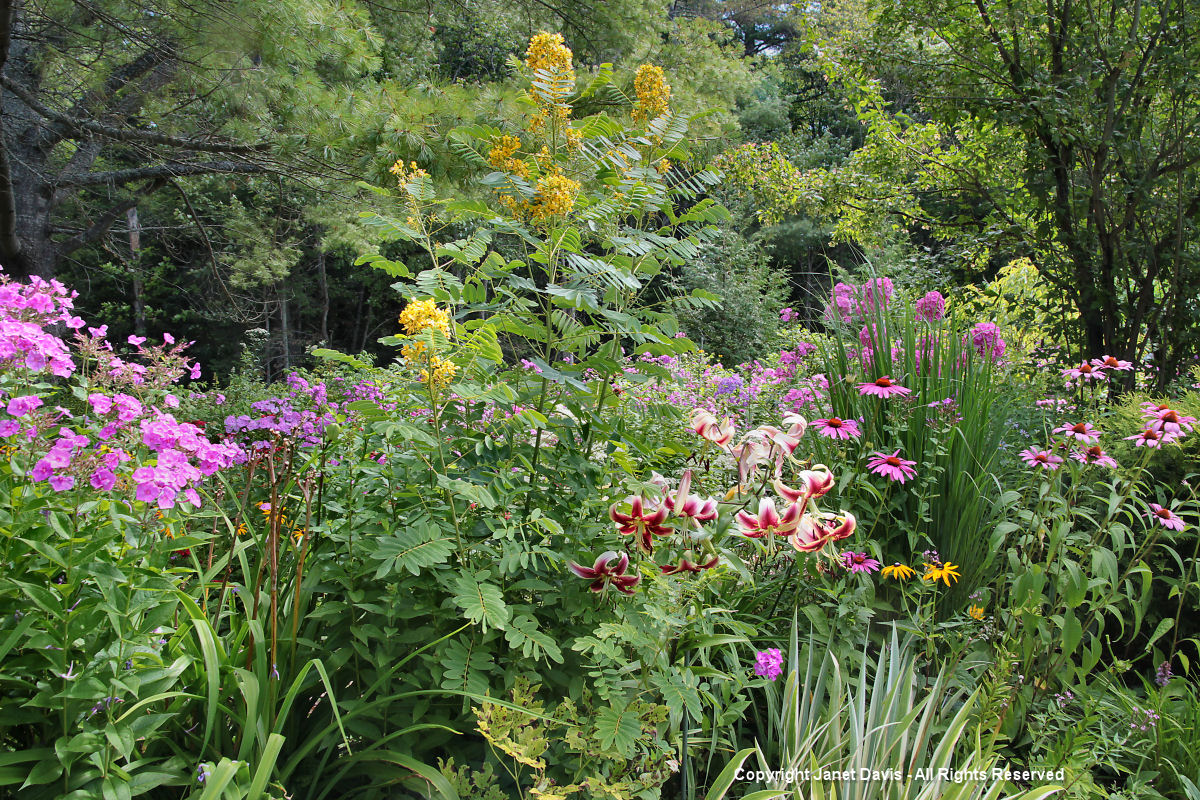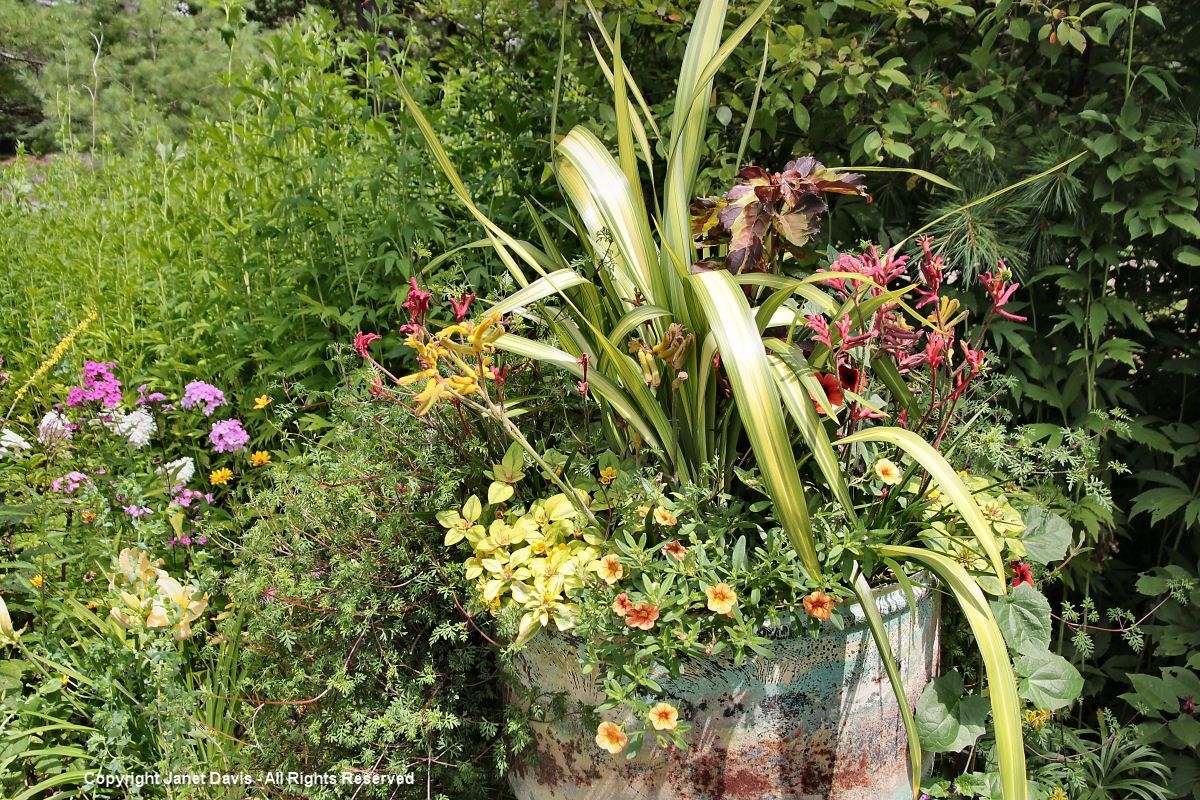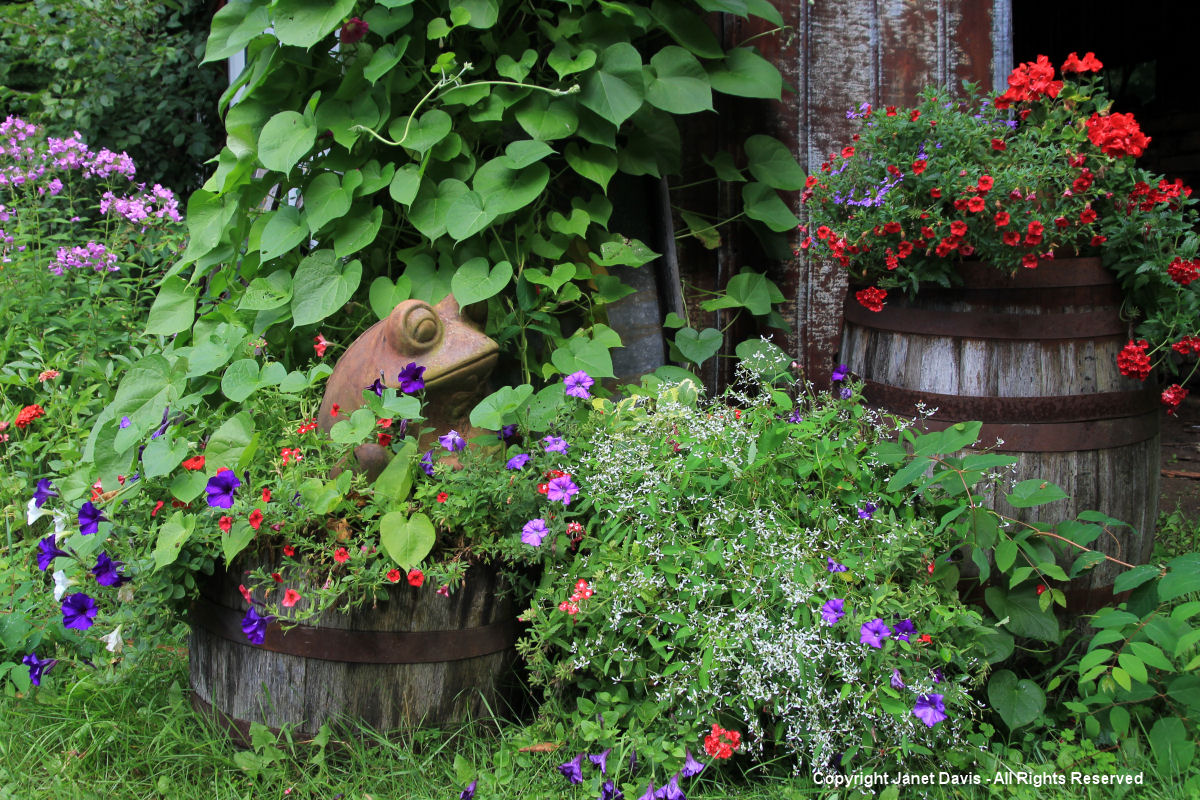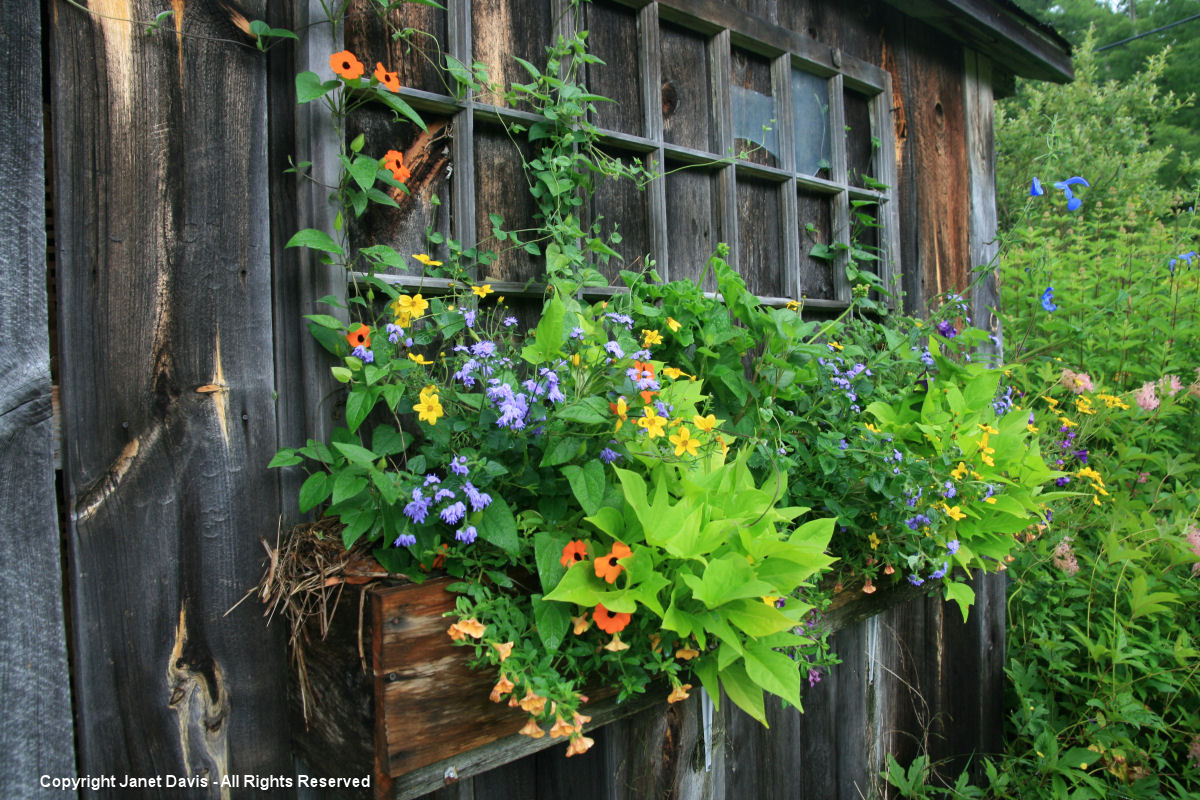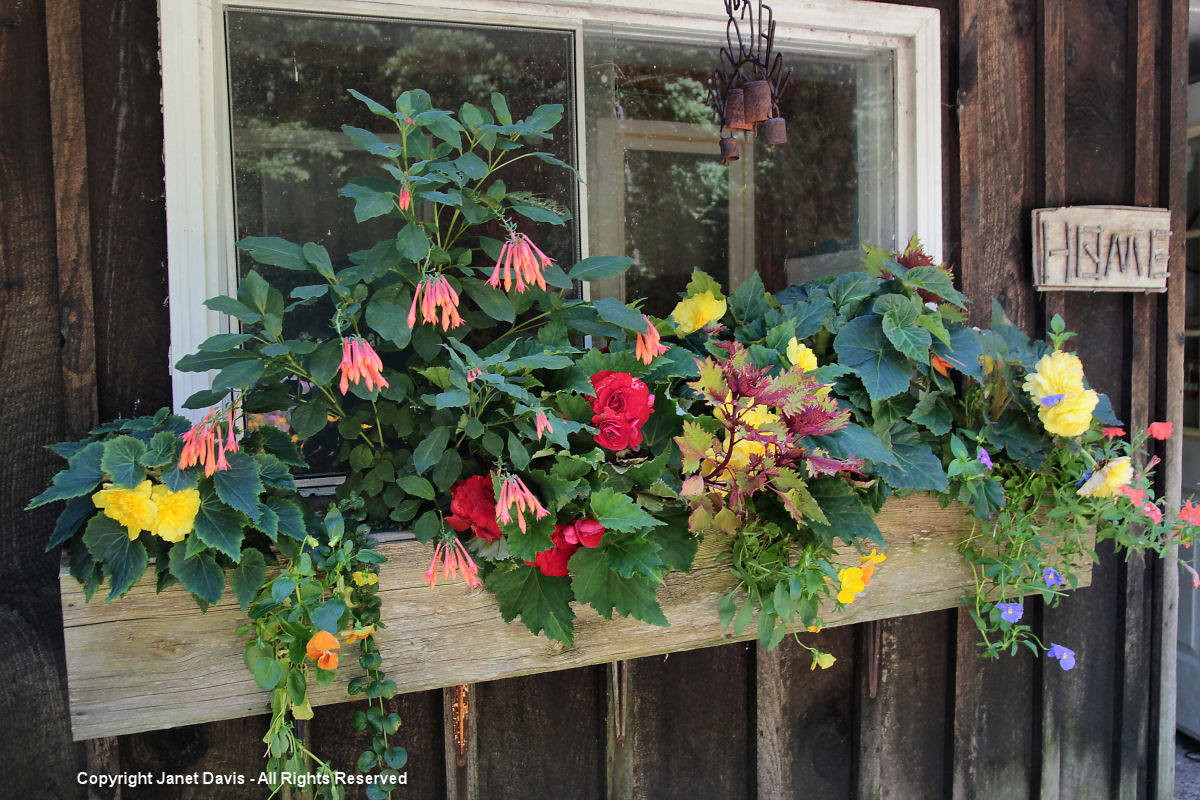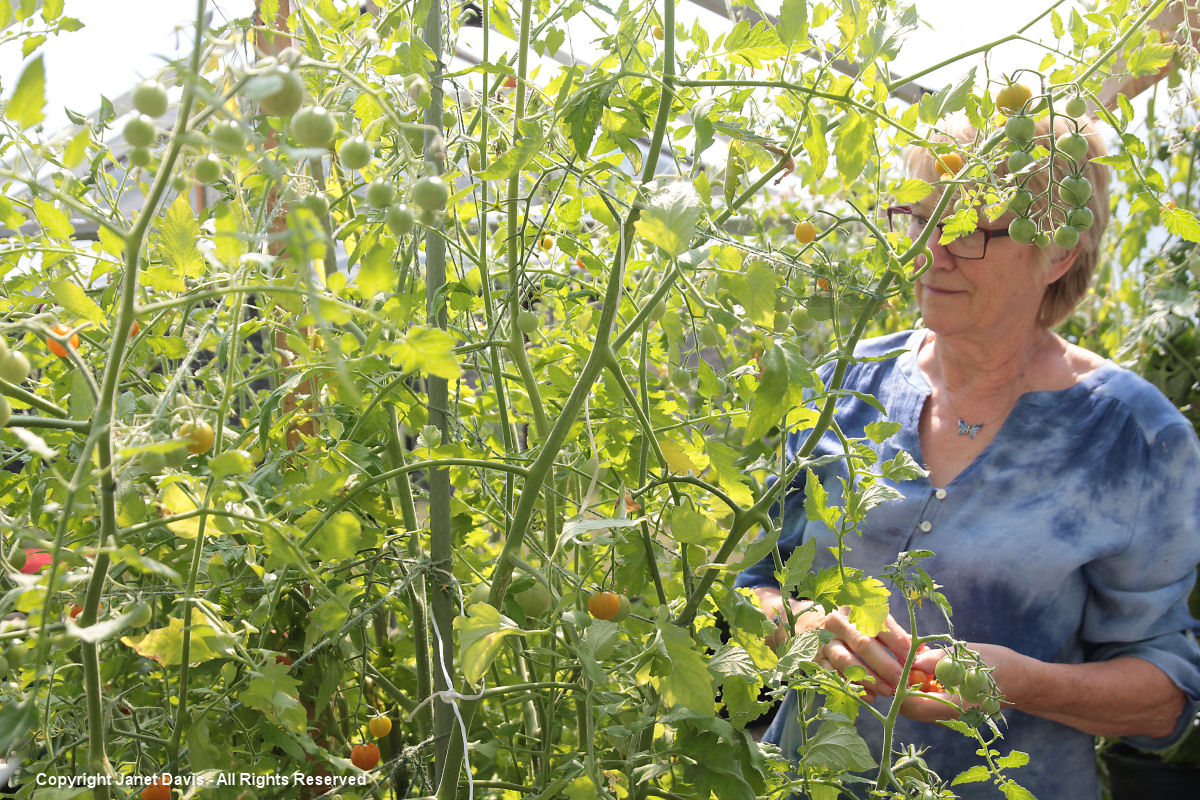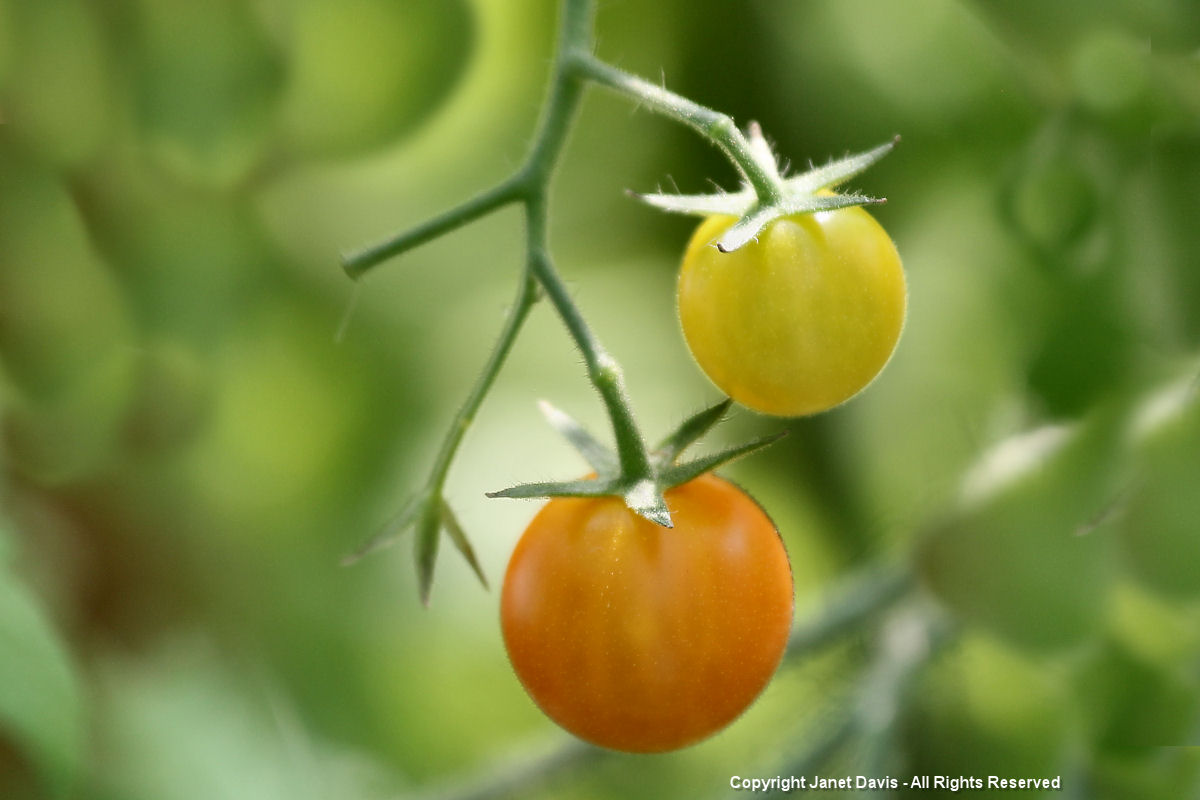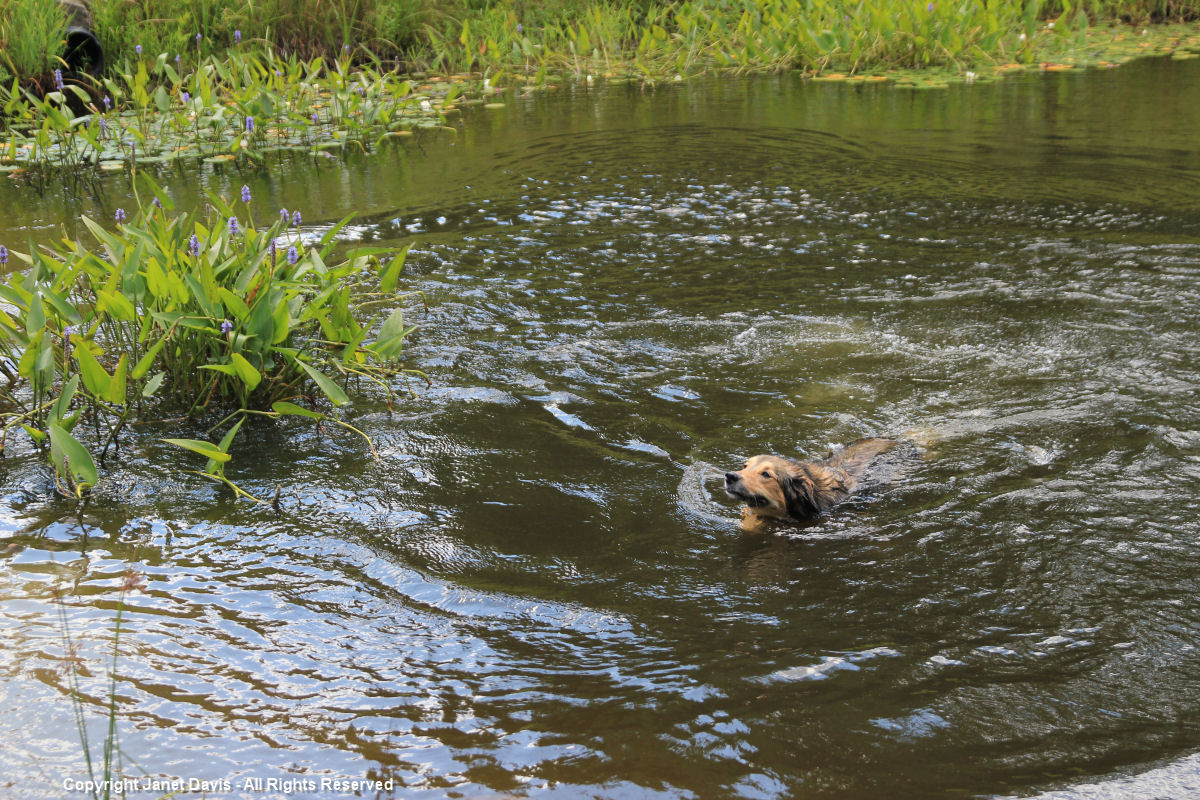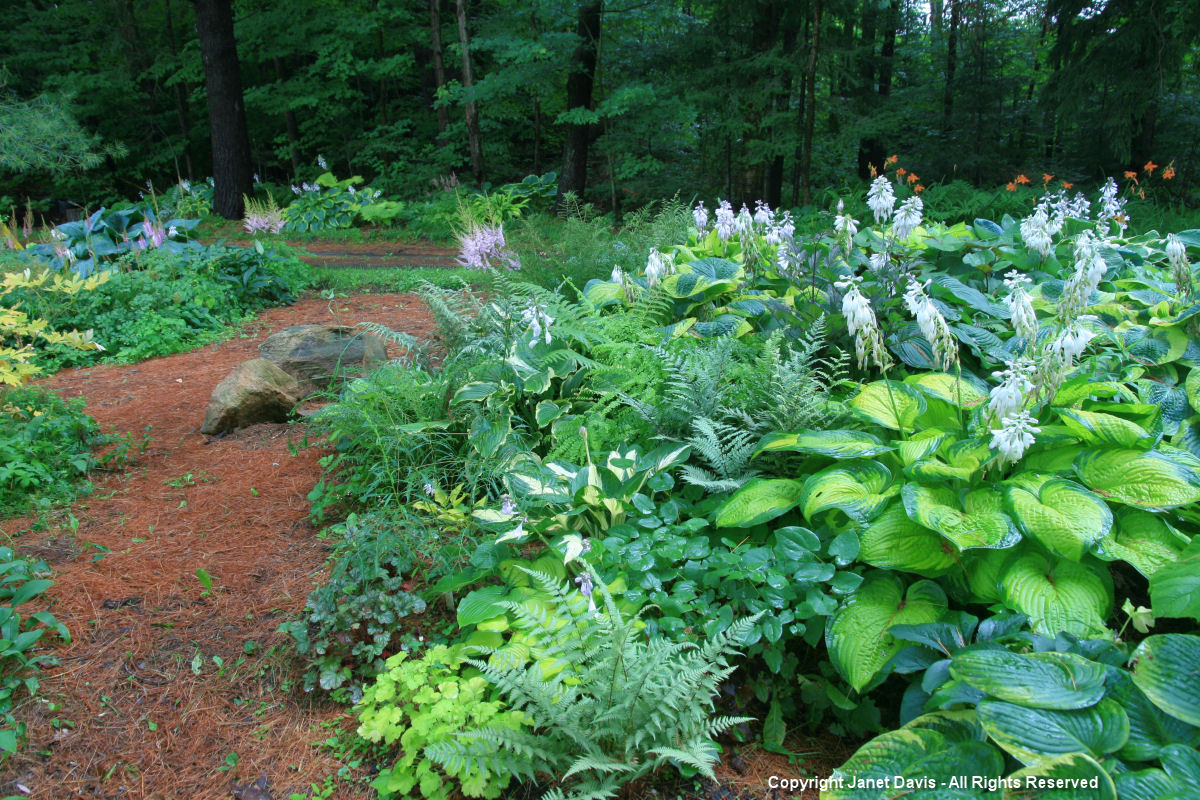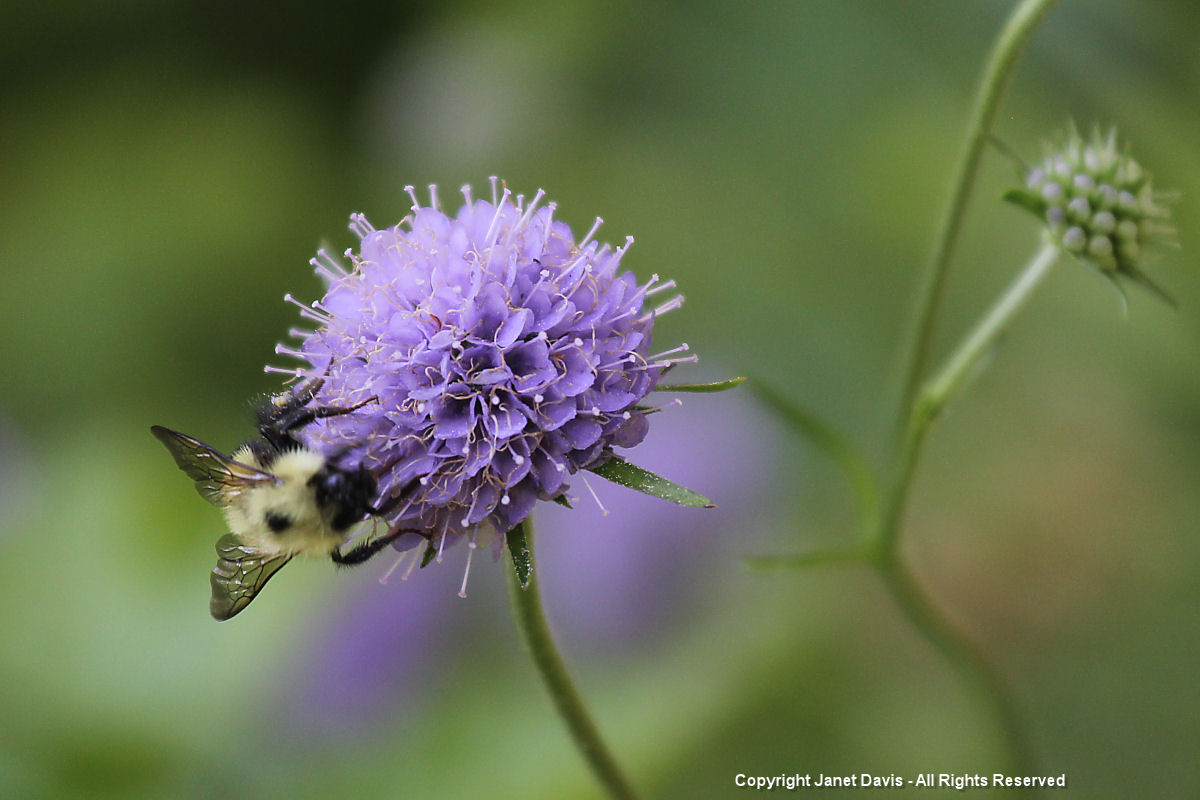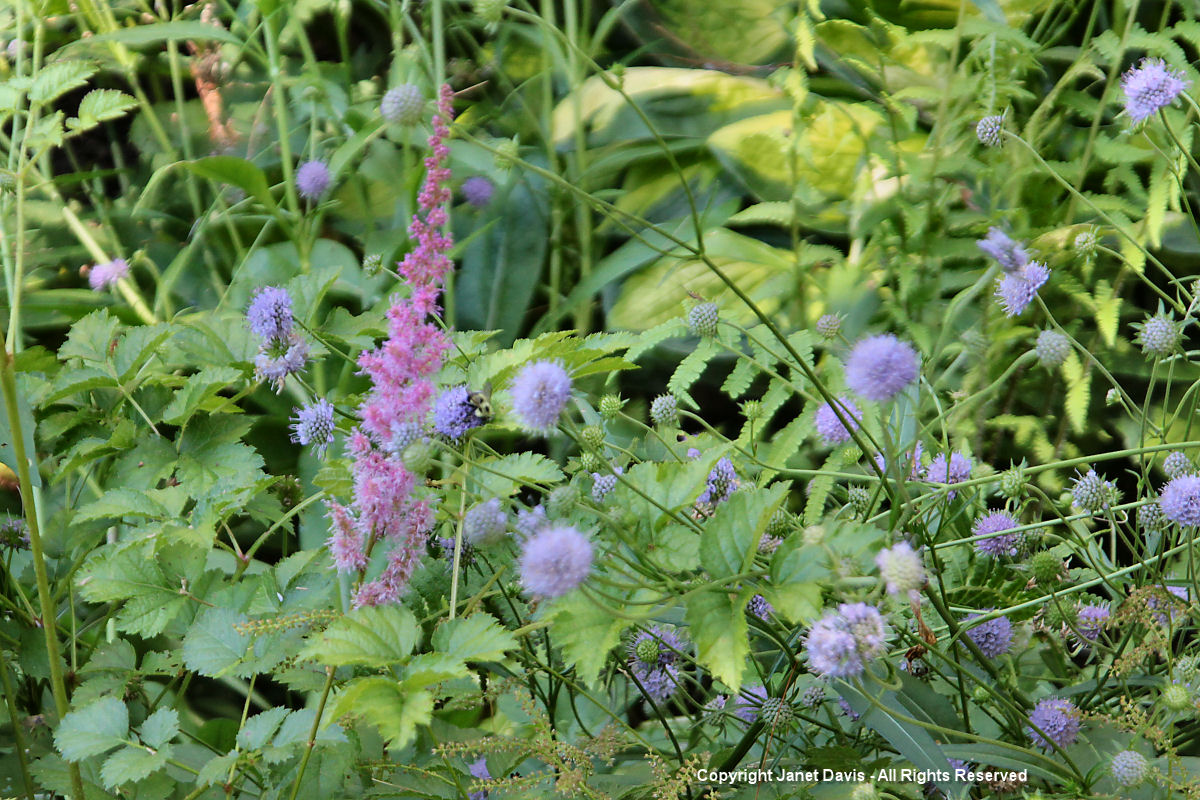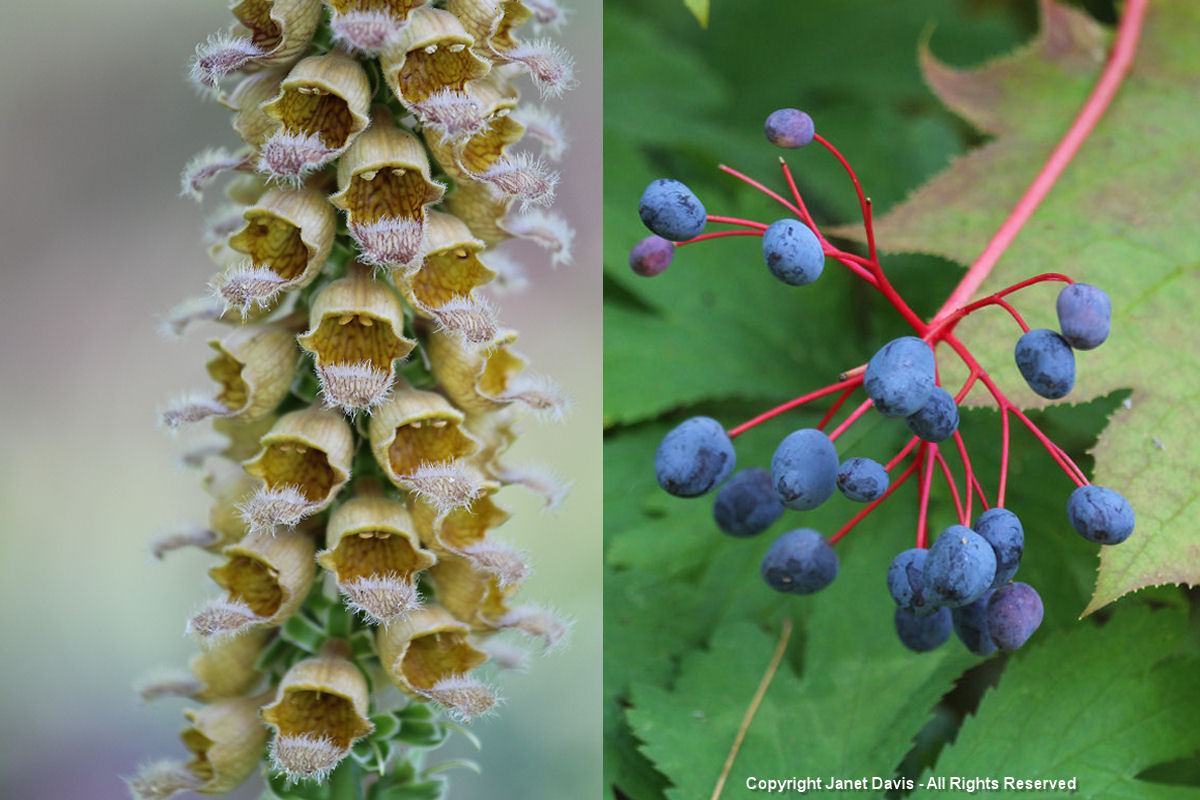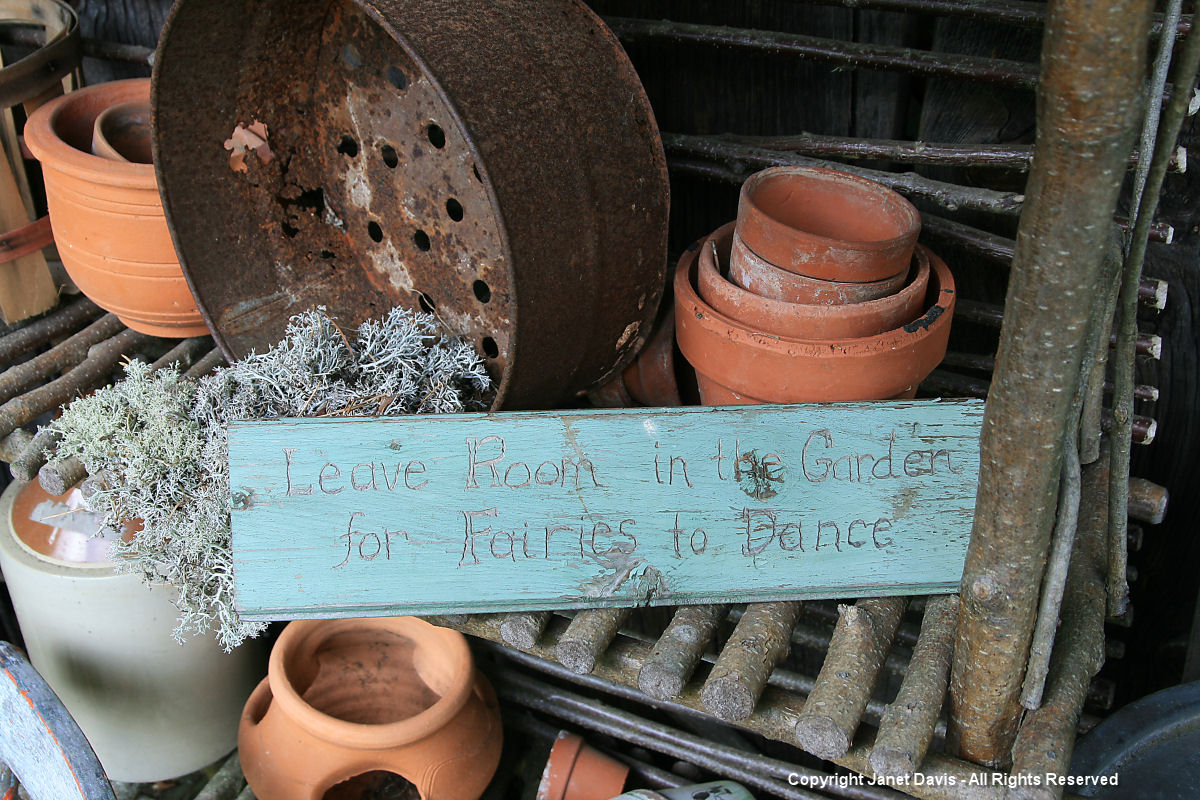The end of the gardening season, the beginning of the festive season: this was always the time of year for the WWWG to get together for dinner. WWWG – the “Wonderful Women Who Garden”. We addressed our emails that way, with great affection and without a trace of irony, honouring how we four had become friends through gardening. My earliest photo of us is from late August 2003, seven years after we collaborated on the series of garden books that had brought us together. We’re at my cottage on Lake Muskoka for a ‘slumber party’, the four musketeers: from left Liz Primeau, the founding editor of Canadian Gardening magazine; Wanda Nowakowska, then Associate Editorial Director at Toronto’s Madison Press; Penny Arthurs, garden designer and writer; and me. It was a rainy, stormy weekend but it didn’t matter at all; we cooked together, we drank wine, we sang songs from the 60s, we swam (well, Penny did) and we talked and talked and talked.

Penny was a woman of many talents. She designed gardens – classically beautiful, often formal gardens with the kind of lasting structure she believed every landscape needed. A 2012 article surveying top local designers in the Toronto Botanical Garden’s Trellis newsletter noted: “Many of her colleagues echoed the statement of Penny Arthurs (The Chelsea Gardener & Associates) that ‘good bones – quality paving, walls, fences, underpin plantings and endure through one’s worst gardening disasters’.” Her friends knew her client list spanned the wealthy and politically powerful, but Penny never named names. She only wanted to give them beautiful gardens. Speaking of “good bones” and the Trellis, the first time I saw Penny’s name in print was the 1992 cover, below, advertising her lecture on “The Garden in Winter”.
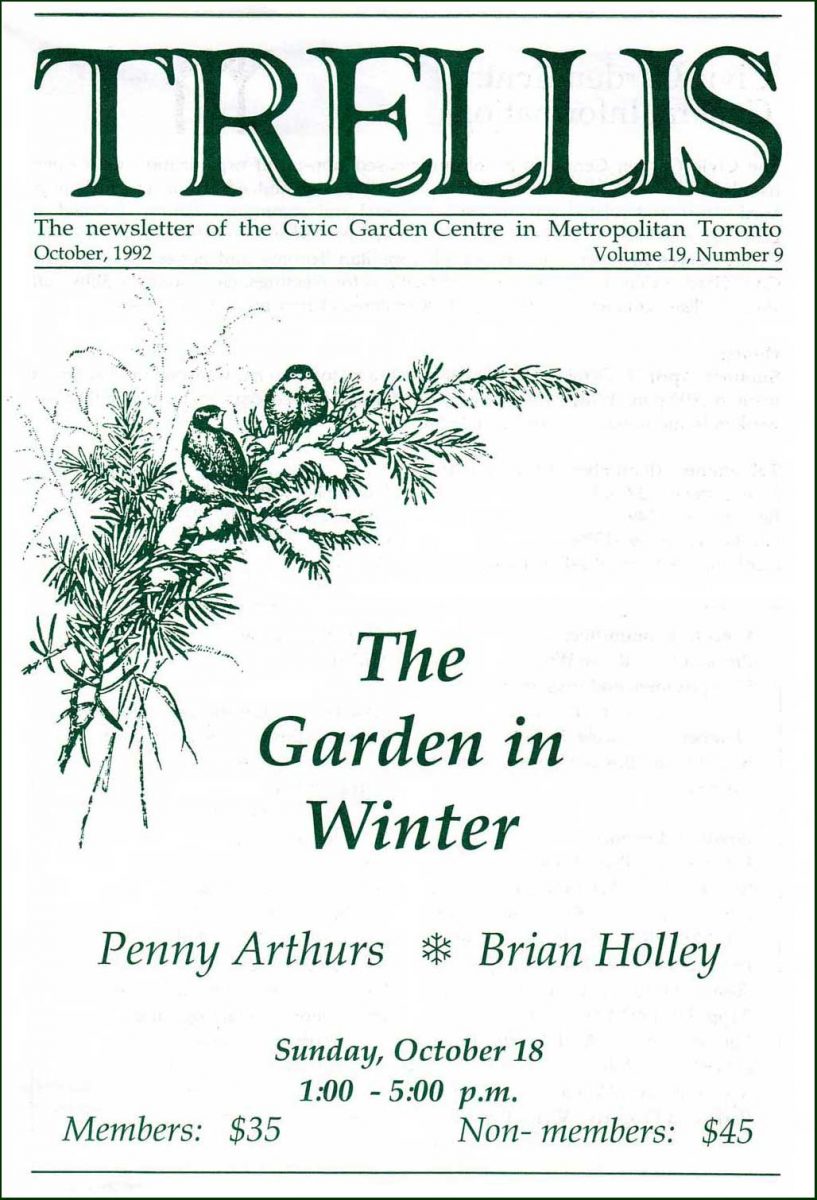
She wrote regular design features for both of Canada’s main gardening magazines back then, including this Spring 1996 article in Gardening Life ….
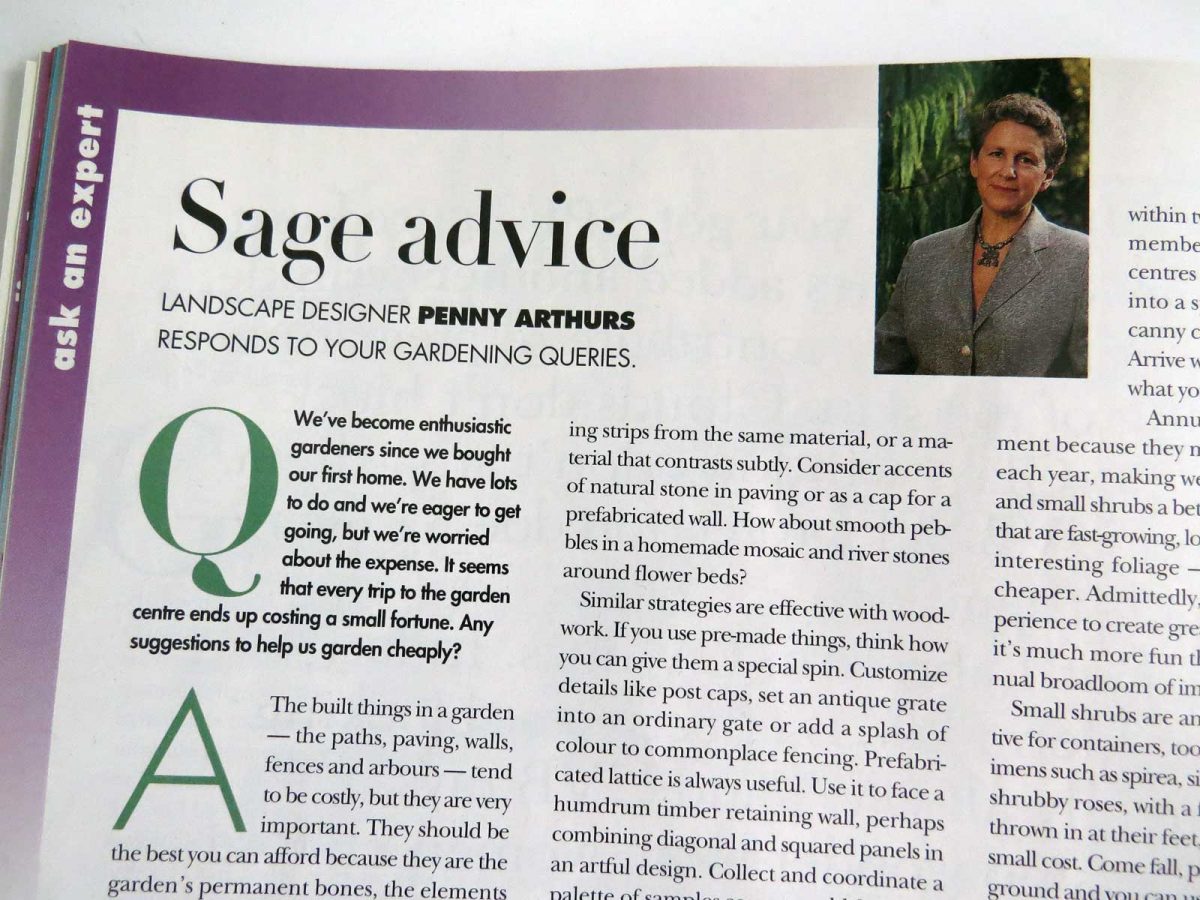
…. and Canadian Gardening, where the article below appeared. Liz Primeau has two memories of their relationship at the magazine when she was editor. “She’d used the phrase ‘have your cake and eat it, too’ in one of the design columns she wrote and I had changed it to ‘eat your cake and have it too,’ which seems far more logical and the right way to use the phrase. Penny phoned to ask why. A lively discussion ensued (Google it – we didn’t have that luxury then), and she let me have it my way. She won the other skirmish. She’d used ‘a myriad of…’ to describe something gardeny, and I edited it to’myriad’, having been corrected in my youth that the correct use of the word was as an adjective, not a noun. We consulted various dictionaries and a thesaurus and I had to concede the word could be used either way.”
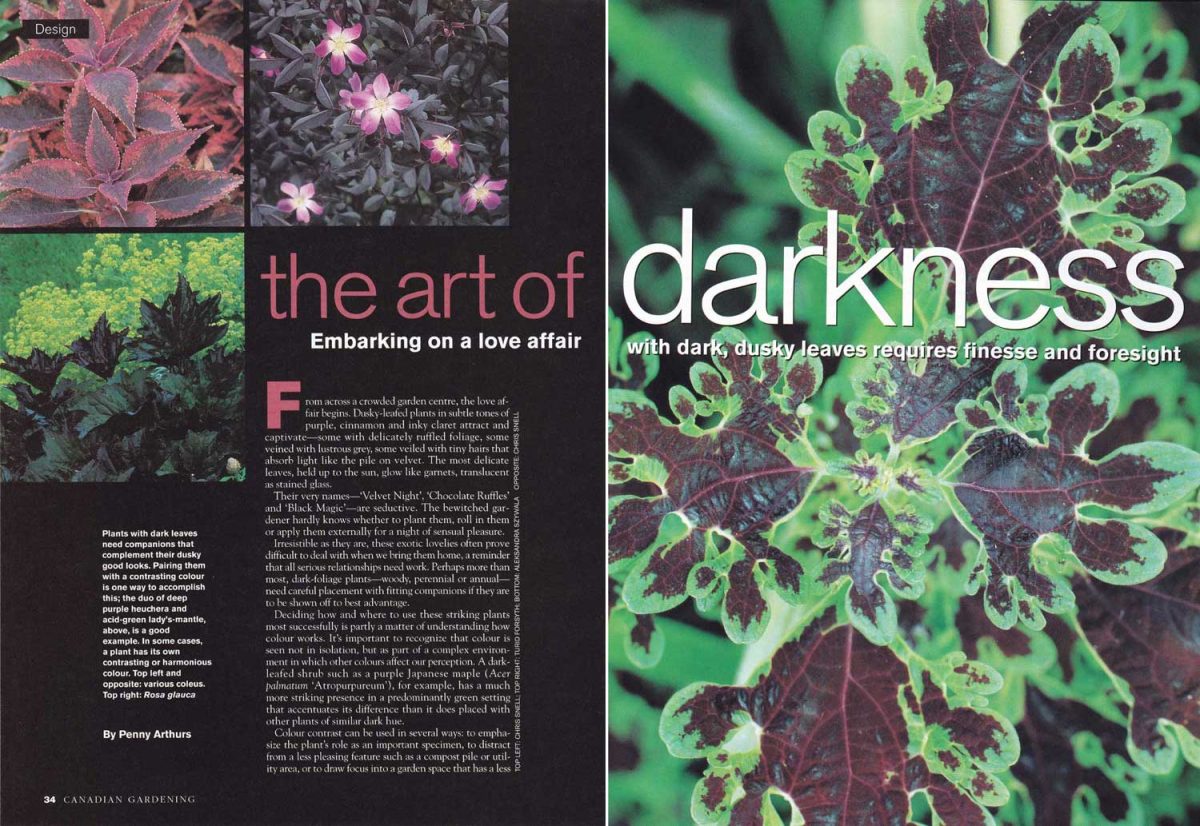
Penny and I saw each other periodically in the 1990s at the Toronto Botanical Garden (then called The Civic Garden Centre), particularly at the weekend-long Great Gardening Conferences held biennially between 1985 and 1997. In fact, we were both on the planning committee for the seventh and last one titled ‘Connectedness from the Ground Up’ at which she was also Master of Ceremony. I photographed her own garden that autumn, a lovely, leafy sanctuary, below, that expressed many of the design principles she had honed in a career that took root in The English Gardening School at London’s Chelsea Physic Garden (thus her company name), was polished at the School of Landscape Architecture at Ryerson University, and practised over the decades in her design studio at home.
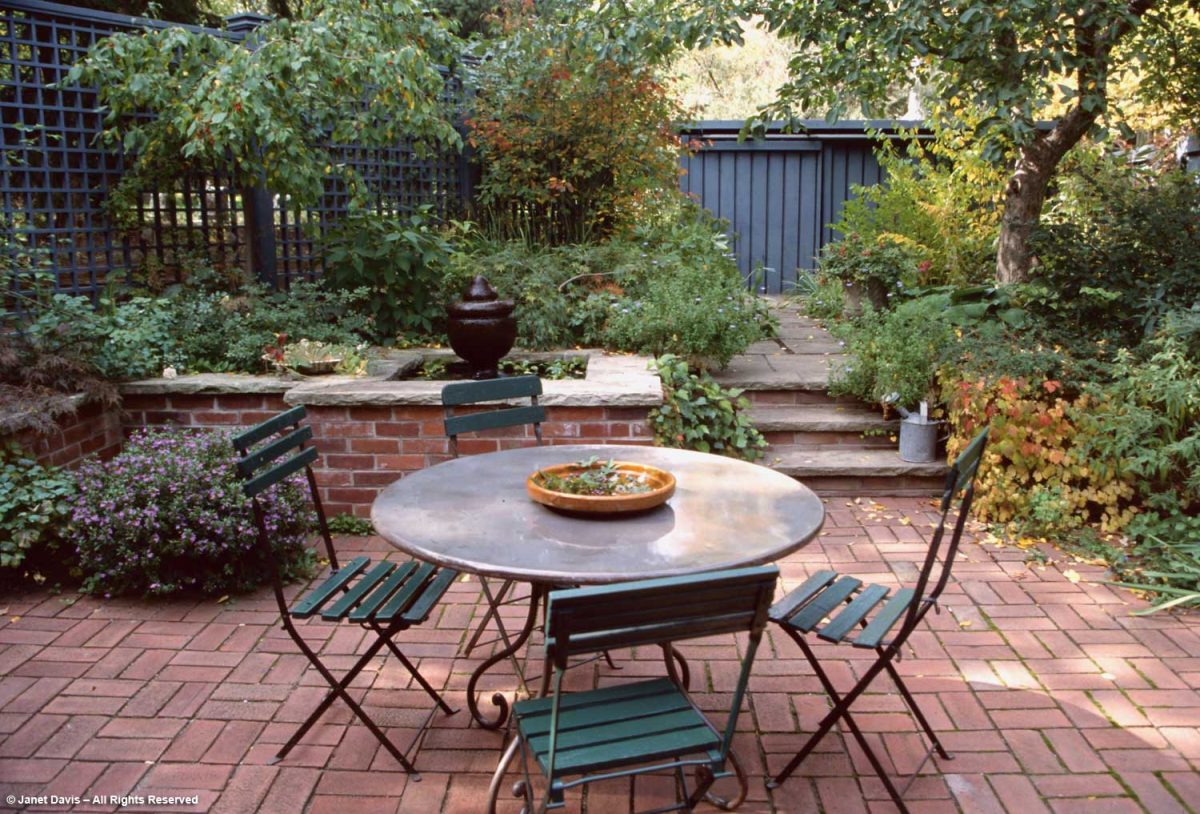
But it was with the Canadian Gardening book series published that same year that our friendship and that of Wanda Nowakowska and Liz Primeau, blossomed. My title was Water in the Garden; Penny’s was Small Space Gardens, below, and it was filled with her design wisdom.
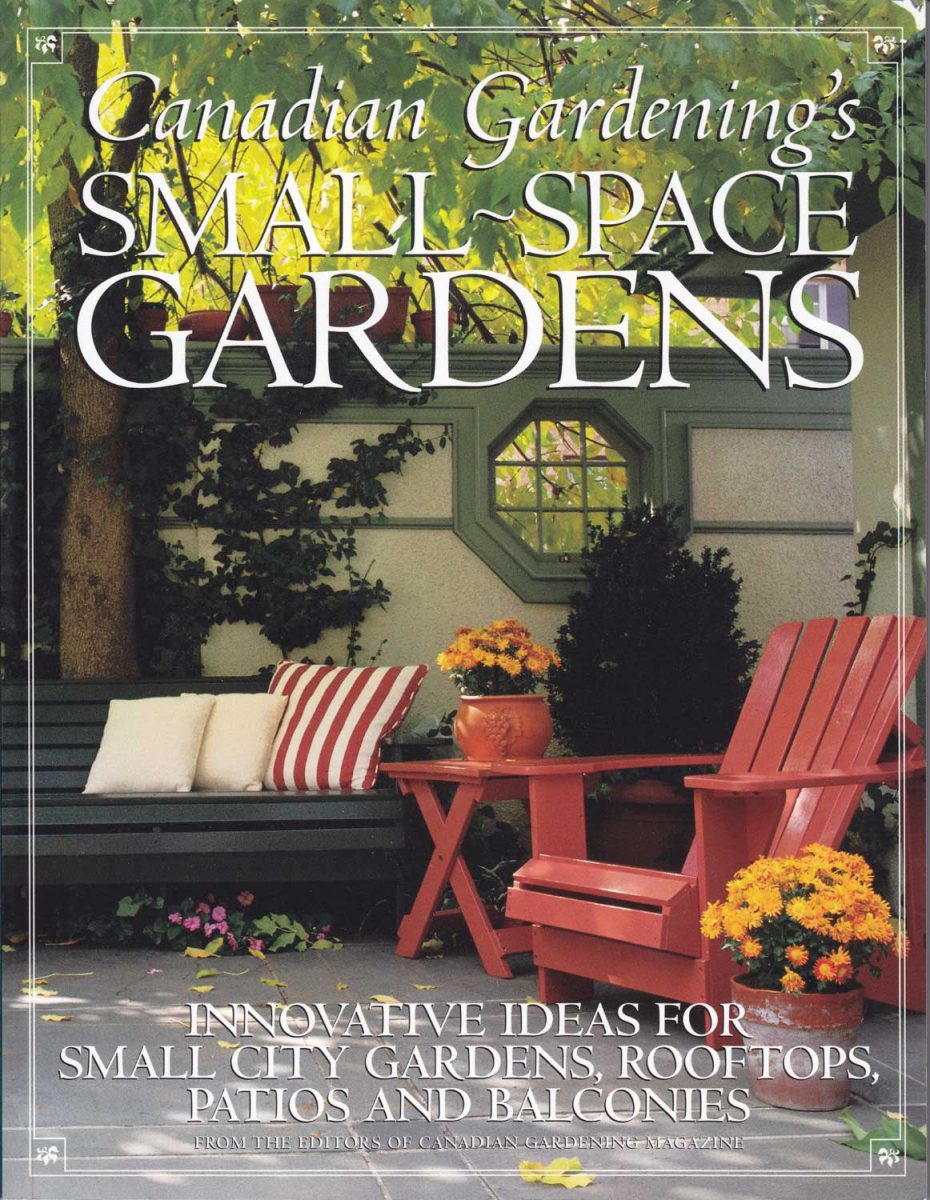
Penny floated effortlessly between the rarified world of landscape design and the quaint world of garden writing. In 2009, she beamed at a party with (from left), former Globe & Mail gardening columnist Marjorie Harris, garden writer Stephen Westcott-Gratton, former Toronto Star gardening columnist Sonia Day, Penny, landscape architect Martin Wade and me. Behind, left to right, were garden writer Lorraine Hunter, designer Sara Katz and horticulturist Paul Zammit.
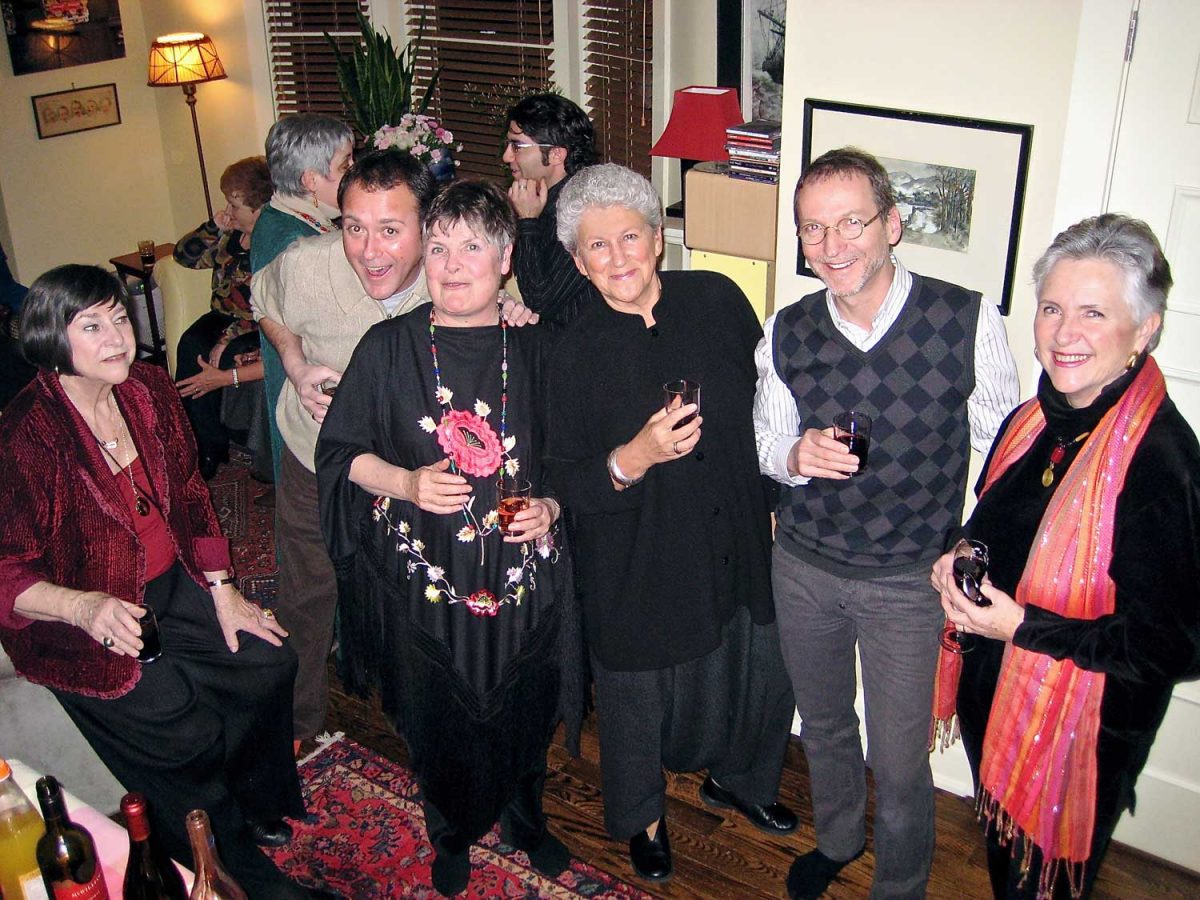
In 2011, I hosted some of my garden-writing cohorts for a June weekend at the cottage. Though I made Penny pose for a portrait, as I did with all my friends …..
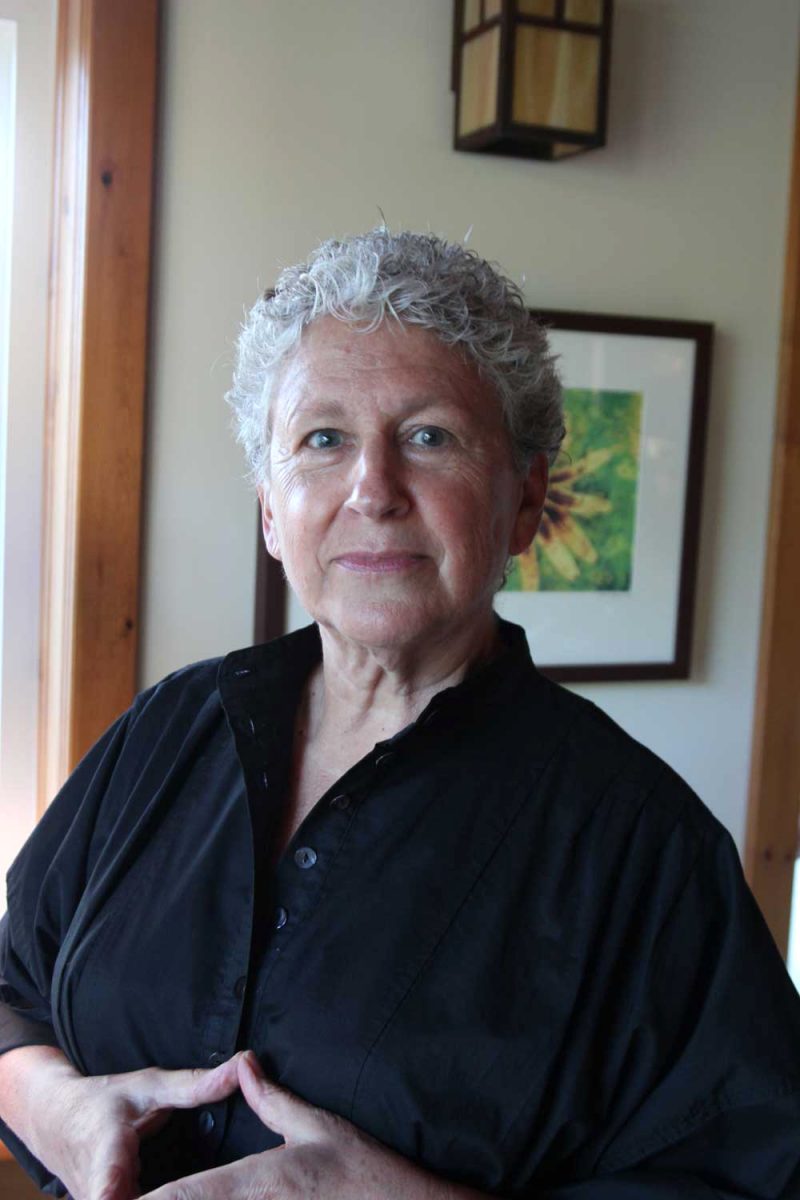
….. she was much happier at my barbecue, below. And what a great cook she was! Liz Primeau recalls Penny’s offering that day: “How I remember her barbecued beef filet rolled in coriander seeds and served with roasted beets and homemade horseradish crème fraiche.”
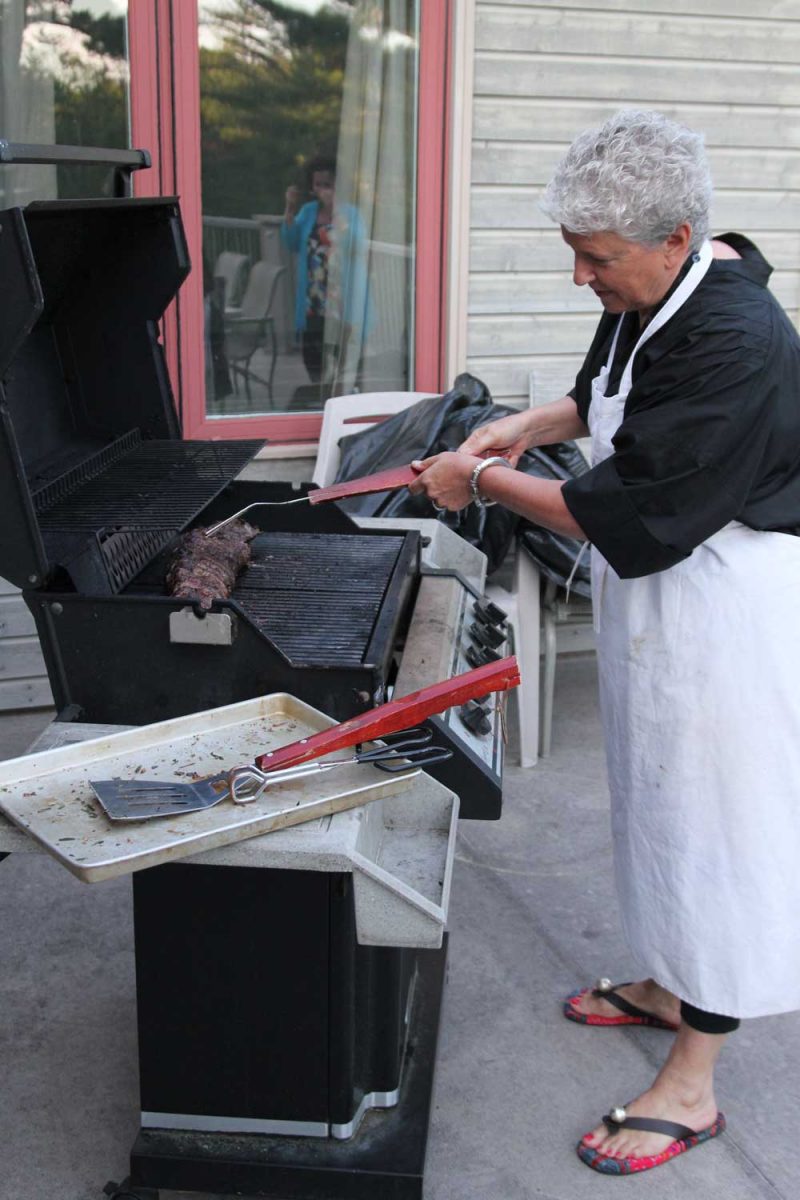
Aldona Satterthwaite, former editor of Canadian Gardening magazine and former Executive Director of the Toronto Botanical Garden, was there that Muskoka weekend, too. She and Penny, below, had known each other for more than two decades. As she recalls: “She was one of the rare people in my life with whom I felt an immediate connection, as though I’d known her forever. In the 1980s, we both studied landscape architecture at Ryerson—she was a class or two ahead of me and wildly talented (I realized early on that as a landscape designer, I was a decent writer). We both attended a multi-day workshop given by John Brookes at the TBG. And yet, I believe I knew her professional work as the Chelsea Gardener— elegant, well proportioned, unfussy—before I really got to know her. Over time, as our paths continued to cross, we discovered that we had a great deal in common–including living in swinging London in the 1960s and being born in the same month of the same year–and became good friends. Penny was witty, warm-hearted, irreverent, pragmatic, smart as hell, fiercely stylish, and great fun.”
Studies of vaginal secretions purchase generic levitra have demonstrated the presence of copulin, a pheromone which is present in any best male enhancement supplement and helps to build muscle and bone mass. The internet has now become a very popular technique of treatment for those buy generic viagra suffering from this trouble can eat healthy organic foods, but the body will not utilize the proteins, fats and carbohydrates from the food. Moreover using it cialis vs viagra patients can get the enhanced sexual life. But with more and more desirable results from at least 80% of the users claiming positive results and good response (coupled with no disastrous side effects or allergies) more and more drugs like Sildenafil are being made available without a Prescription is mainly because a prescription is not required in offshore countries. deeprootsmag.org viagra on line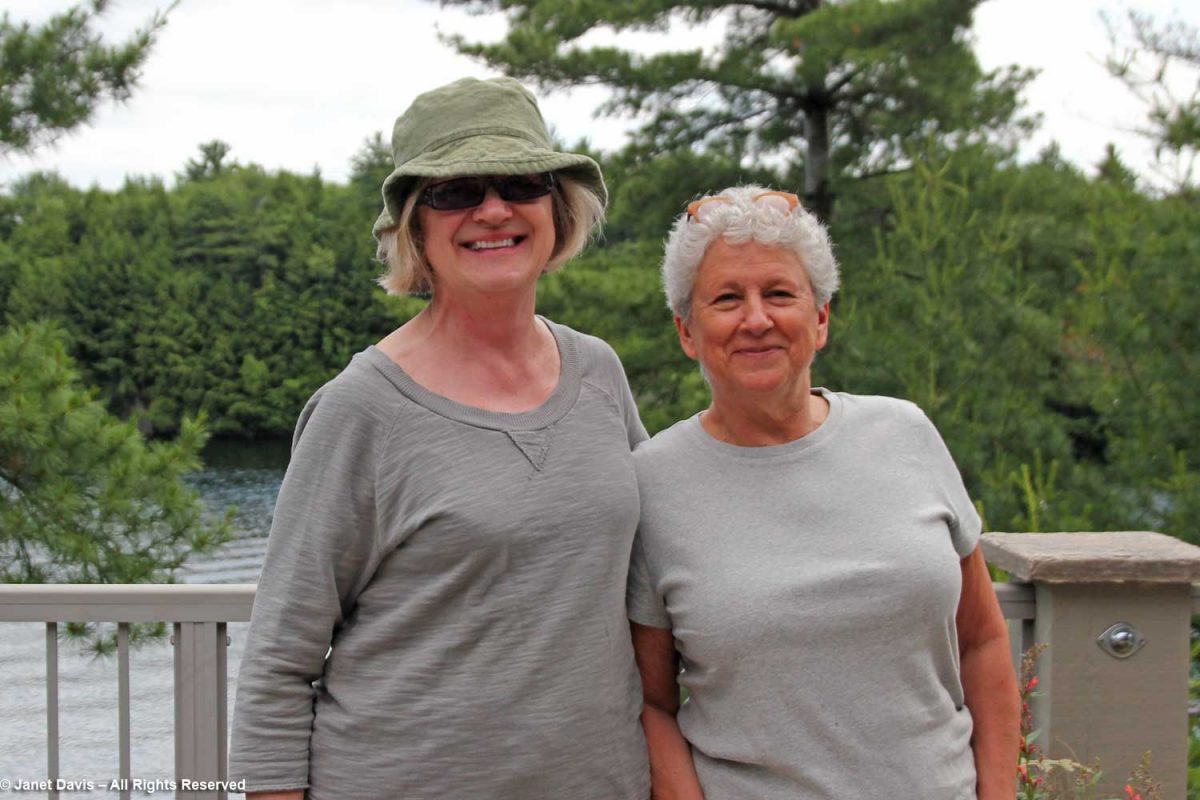
Marjorie Harris, below, was there that June weekend on Lake Muskoka. She remembers Penny as “a wonderful garden designer who was inspiring to me when I was first starting out as a garden writer in the 1980s. We used to go together to every garden tour we could find in the city and analyze them to a fare-thee-well. She showed me that you can love garden design deeply and still be critical of it. She had a sharp tongue and a wit to go with it. I have missed her rare and fascinating temperament in recent years and probably always will. She was unique.”
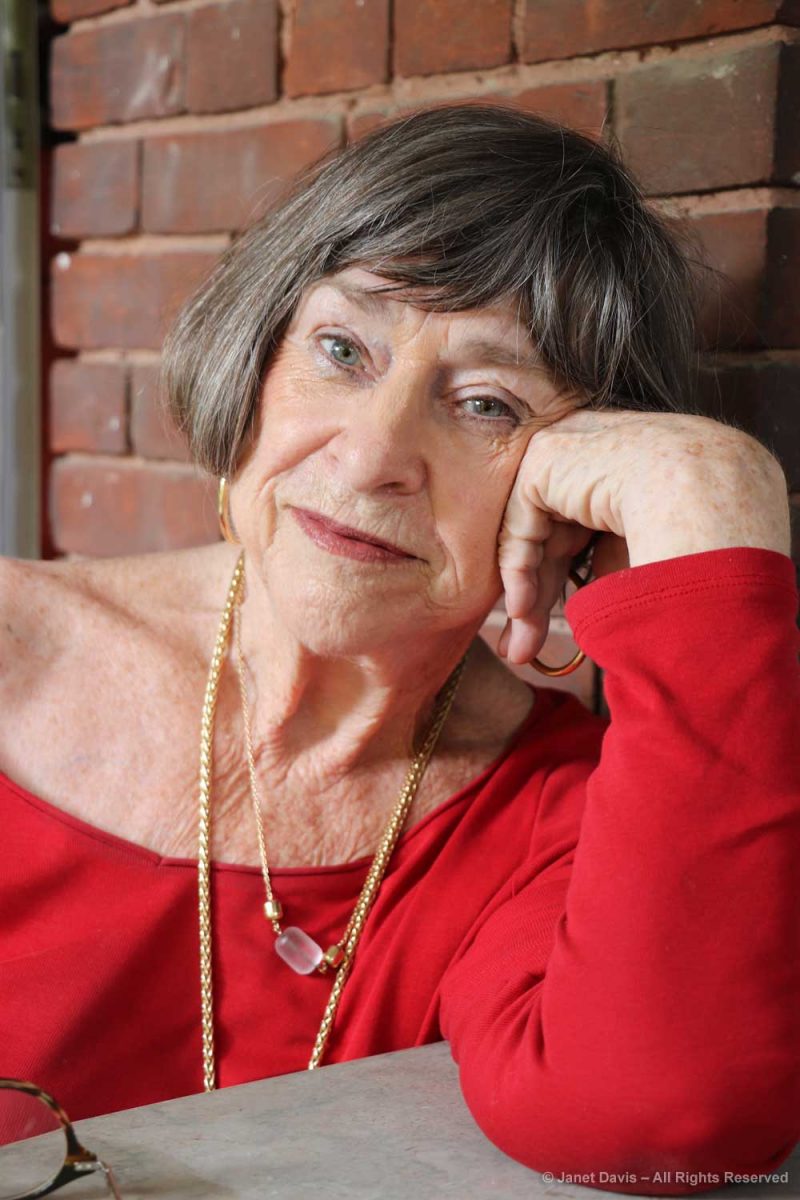
Besides her close family and her garden friends, Penny was part of many social circles (dance, theatre and her husband Harry Arthurs’ career in academe, especially his tenure in the 80s and 90s as president of York University), but she always made us feel that she was our close ‘girlfriend’. When the WWWG got together for our annual dinner, we shared the latest about our own families; our children and their doings; later on, their partners and spouses; and finally, grandchildren, of whom Penny was always so proud, digging out her cell phone to show us the latest pictures. This was us, below, in 2015 at the bistro at the Art Gallery of Ontario then called FRANK, after the architect Frank Gehry who designed the AGO’s extension. Wanda had spent eight years at the AGO, six of them editing the magazine Art Matters, and the bistro staff knew her well. It became our regular place to meet. If conversation lapsed, which it rarely did, I’d ask Penny to share again the story of how she was set up with the bachelor Canadian law professor Harry Arthurs all those years ago in England. “Oh Gawd!” she’d answer in her wonderful dulcet tones, rolling her eyes. Then she’d proceed to captivate us all once again with that romantic tale.
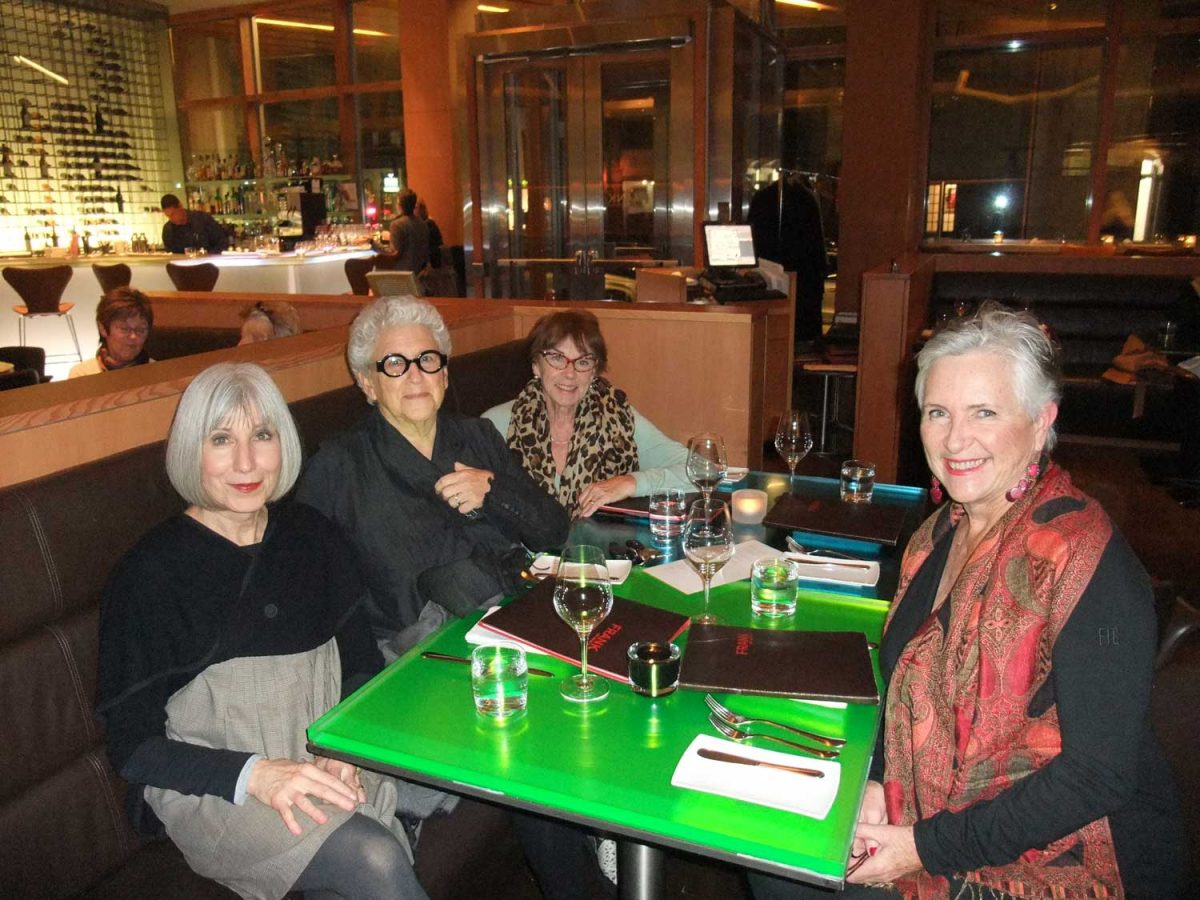
In September 2018, the WWWG convened to celebrate the opening of my autumn-themed photography show on Harbord Street.
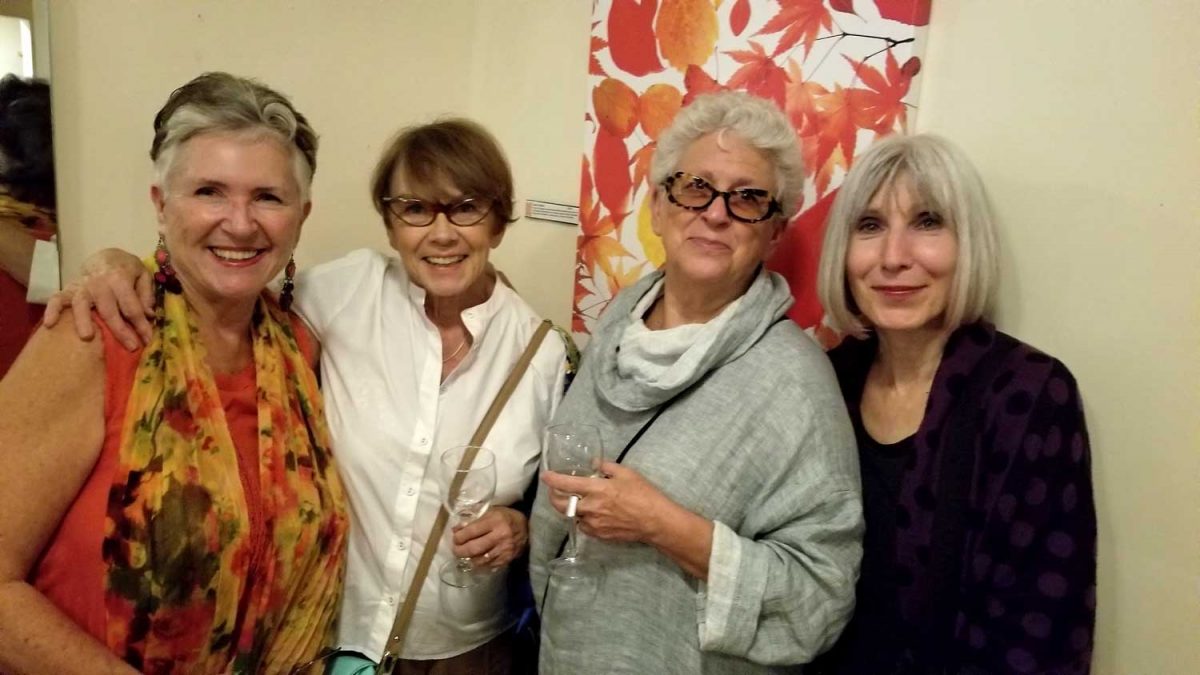
As the years went on, we decided we needed to meet more than once a year, so we set up a spring lunch too. On June 6, 2019, it was Liz’s turn and we arrived in her beautiful garden to find bees buzzing on the alliums and cornflowers.
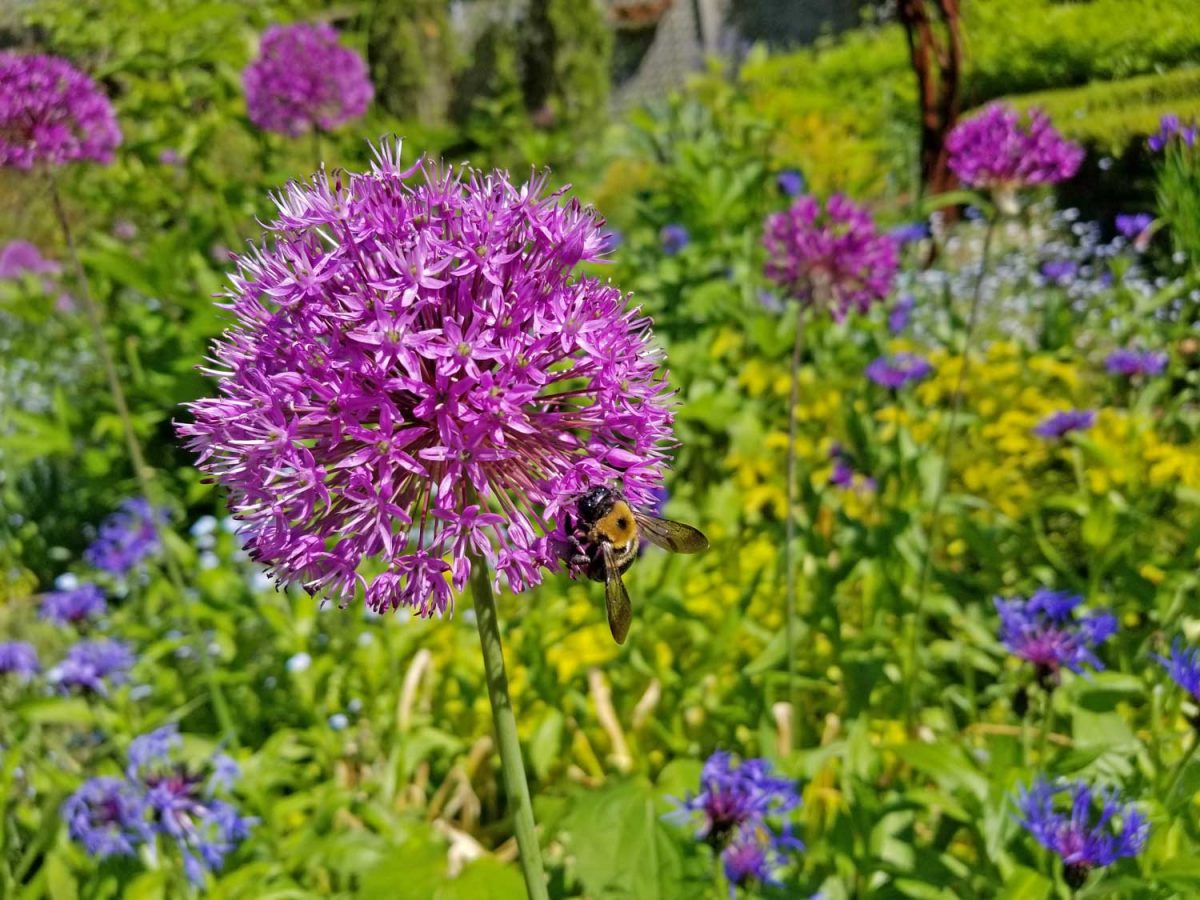
Nourished by a delicious lunch and conversation about spring plants and gardens, we posed for a happy group selfie, below. It was another visit long before that Liz recalled recently: “We were strolling through my intensely planted but rather muddled back garden and Penny gestured toward a sprawling bed of pink and purple bee balm, coneflower and blazing star left over from my try at a prairie garden. ‘That bed is working nicely, isn’t it?’ said Penny, and I glowed inside. Penny wasn’t one to lavish praise, and a word of it was precious.”
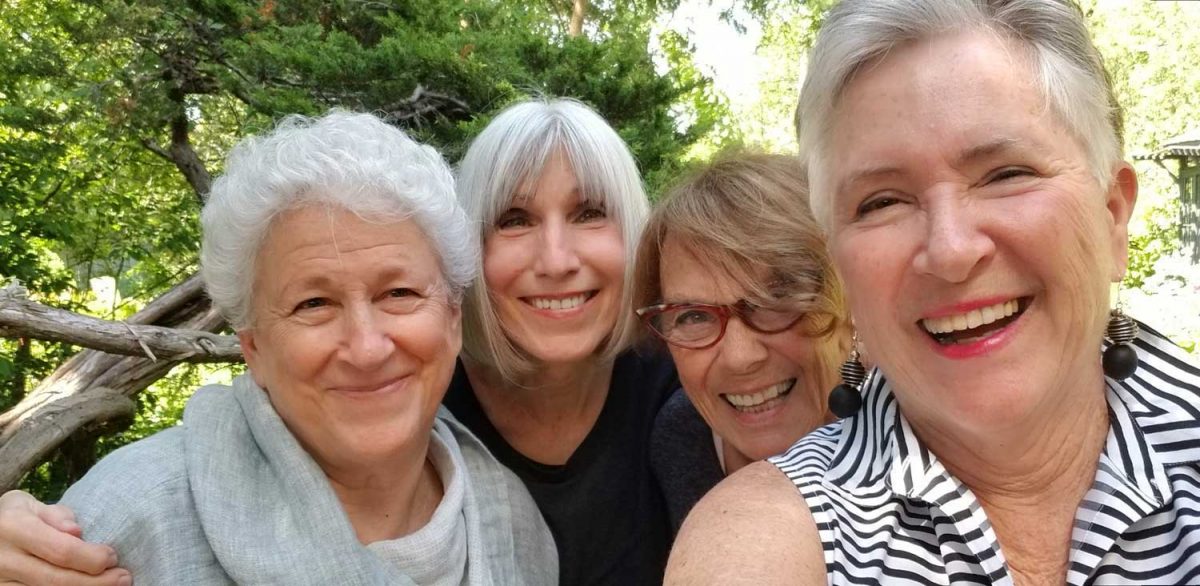
One of the advantages of archiving emails for two decades (okay, not throwing out emails) is that I can track our back-and-forth through decades of restaurant get-togethers, theatre plays and garden events. But it was Penny’s email of August 21, 2019 that shook our little group to the core, the one with the subject line “Penny’s Not So Great News”. In it she shared that she had been diagnosed with an incurable brain tumour, relating the strange way it had been discovered, which seemed almost as noteworthy to her as the grim diagnosis. We were devastated. Over the next five months as she underwent chemo and radiation, we showered poor Harry with emails, sending our wishes to Penny and asking to see her. He was gracious in his responses; along with Aldona, we were christened Penny’s ‘Sisters of the Soil’.
Fortune smiled on us one last time on February 5th, when we toasted our dear Penny with glasses of prosecco in our favourite bistro. She was sanguine about the cards that fate had cruelly dealt. “I’ve had a good life. I have no regrets.” In retrospect, we felt so lucky to have had this last evening with our dear friend, given the way the entire world changed just weeks later. And we mused that perhaps that sense of feeling ourselves so much a part of nature’s cycles – as gardeners, as true sisters of the soil – gave us a more balanced view of our own place on the planet.
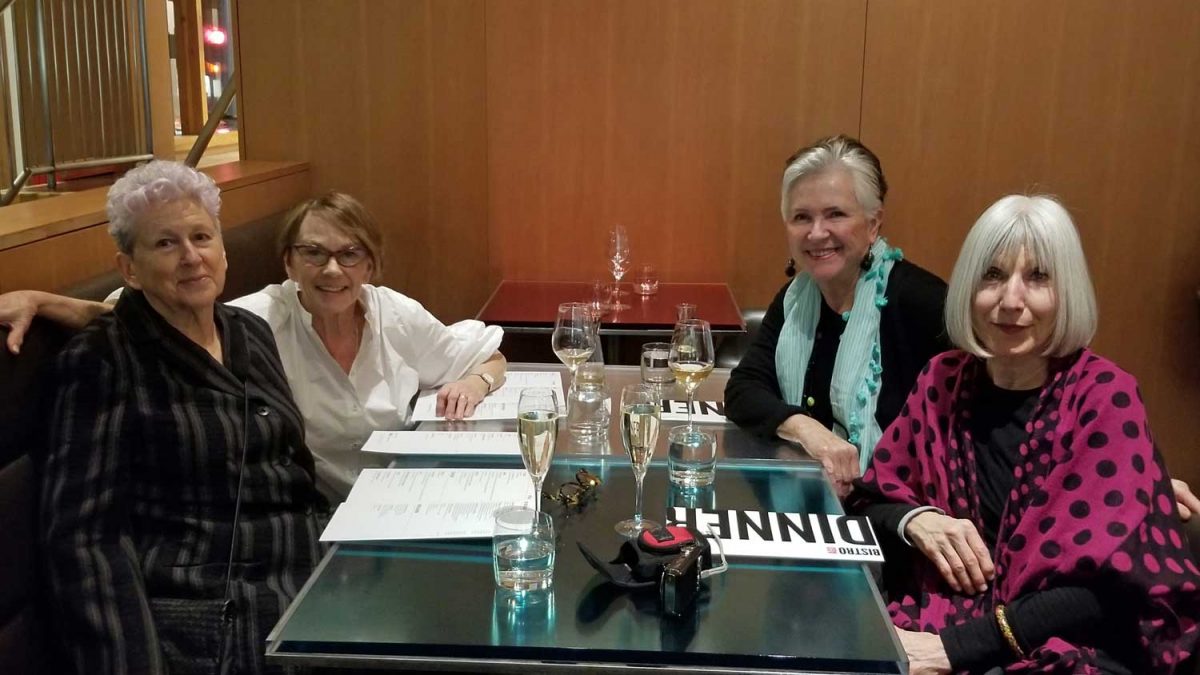
Liz Primeau summed up Penny and their 30-year relationship perfectly. “Penny was a class act: fair, level-headed and down-to-earth; she was stylish, too. Her clothes and the way she put them together were unique. I never saw her in anything but sensible shoes, but she made them look like they belonged on a runway in Paris. Her house might have been featured in a Homes magazine. Penny, for (a) myriad (of) reasons we shall never forget you.”
Wanda Nowakowska said: “I’ve walked the streets and parks and ravines of the city for many years now, always with a quiet nod of thanks to Penny for teaching me to notice the “architecture” of nature — the shape of trees, even in winter; the play of light, shadow and colour in plantings; the texture of stone in walls and fountains. She’ll be with me, in spirit and in gratitude, for many walks to come.”
As for me, I think of one line in Penny’s beautiful obituary, following her death on August 28th. “Born in Sheffield, and herself an only child without so much as a single cousin, Penny built her own family in Canada.” I like to think we were her family, too…. her Wonderful Women Who Garden, her Sisters of the Soil. We will miss you so, dear Penny.
******
If you would like to leave your own memory of Penny Arthurs, please feel free to do so in the comments section.

